
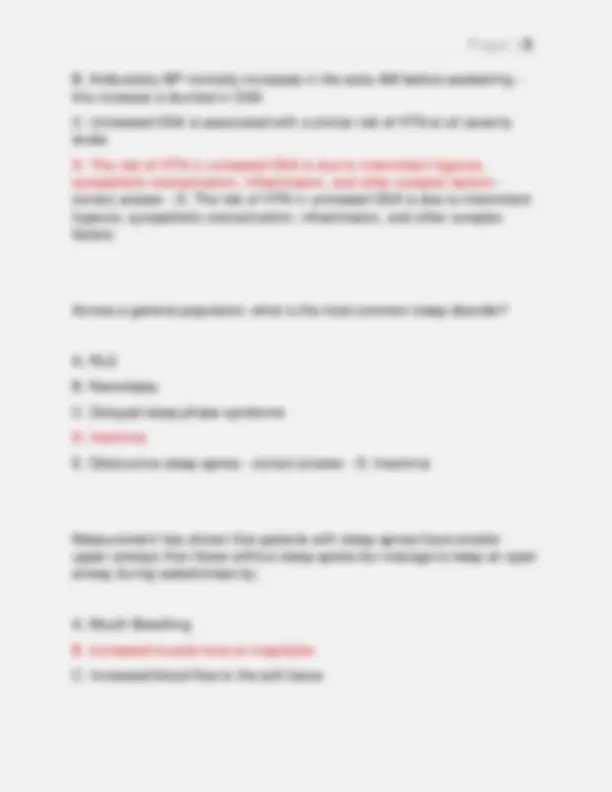
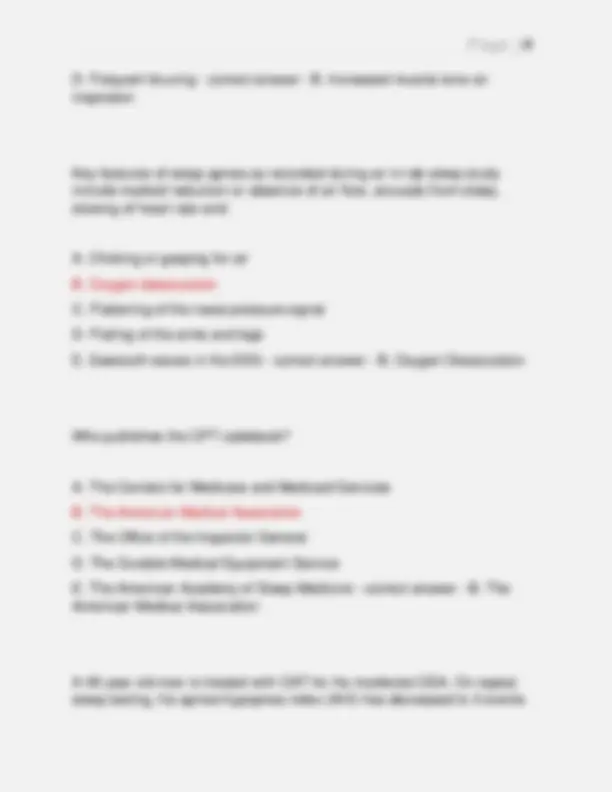
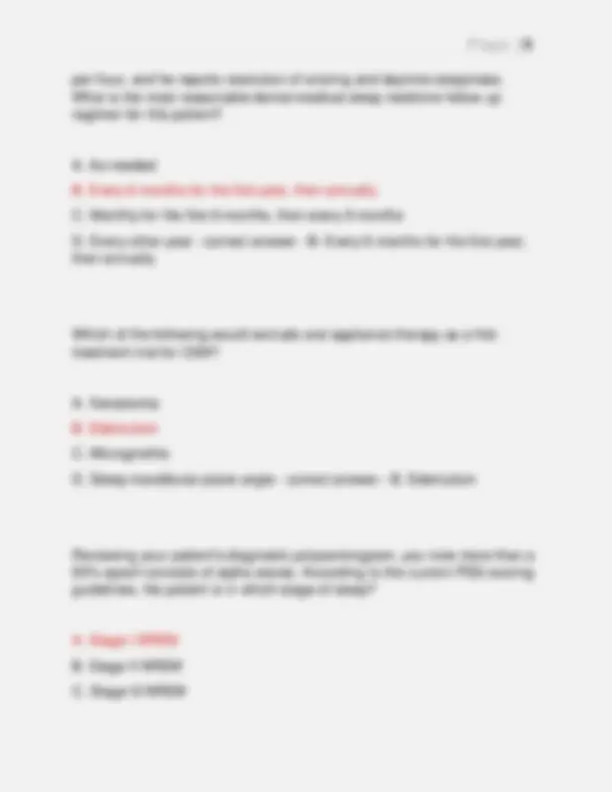
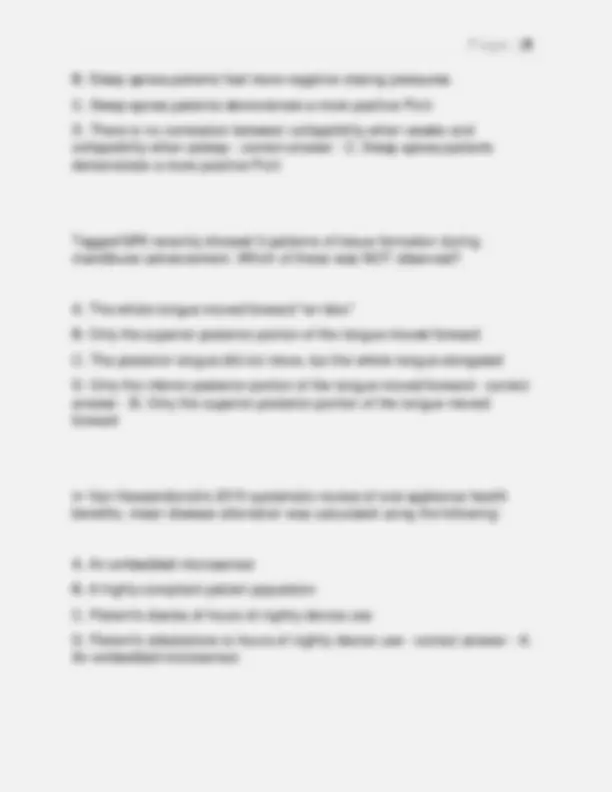
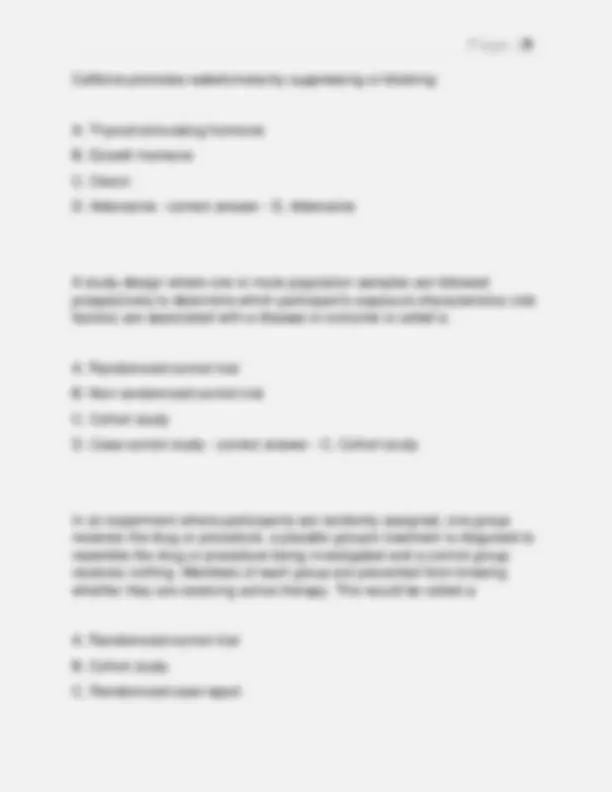
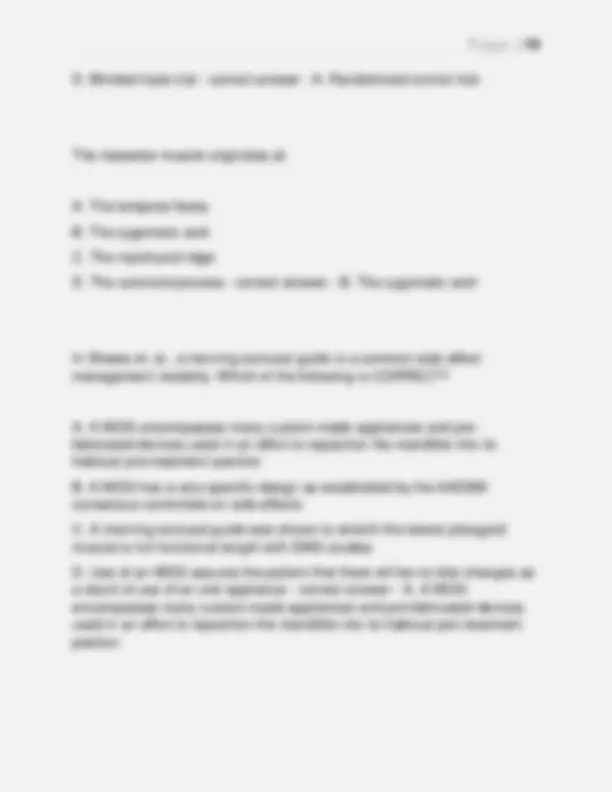
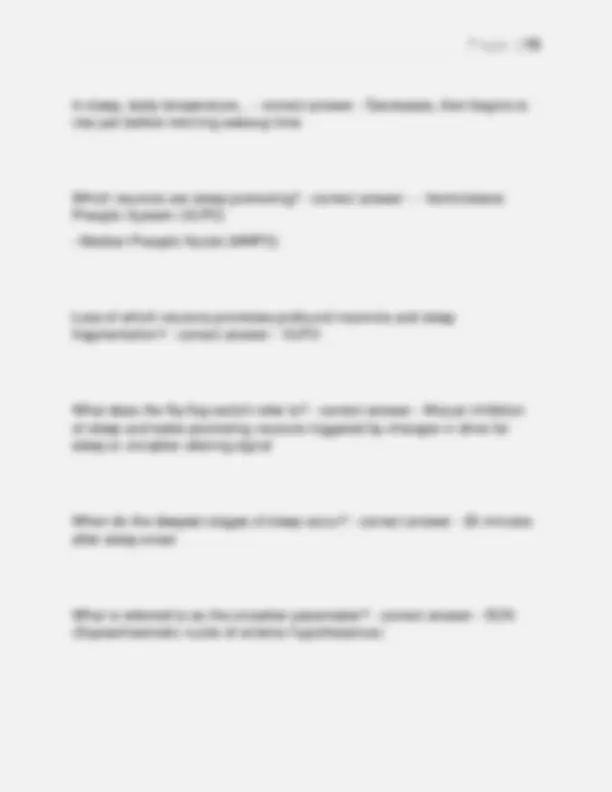
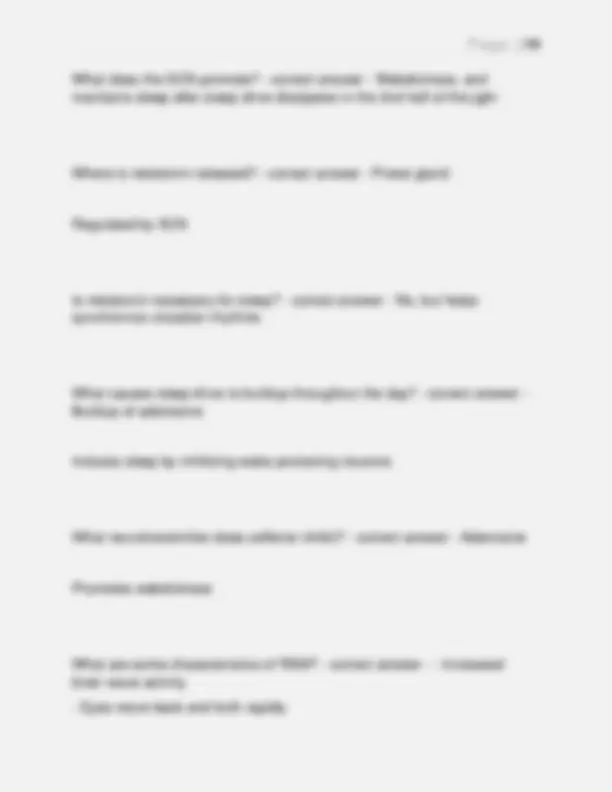
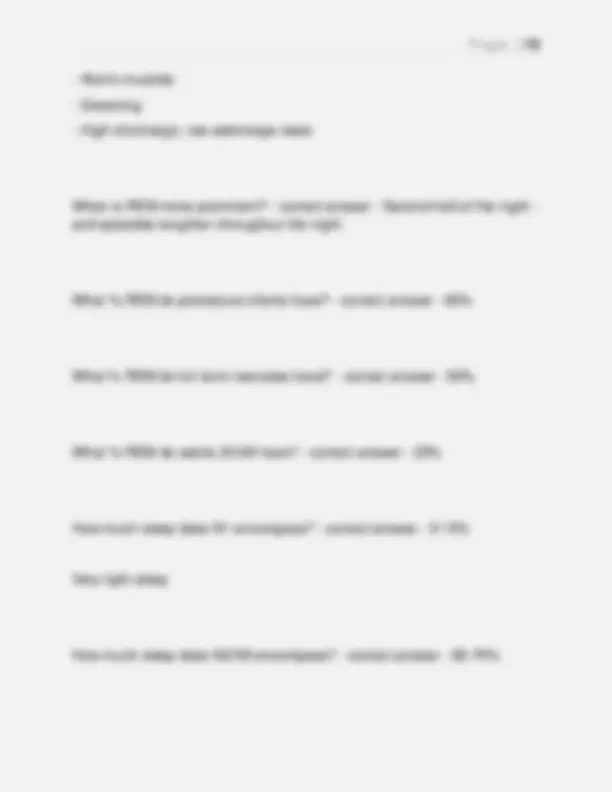
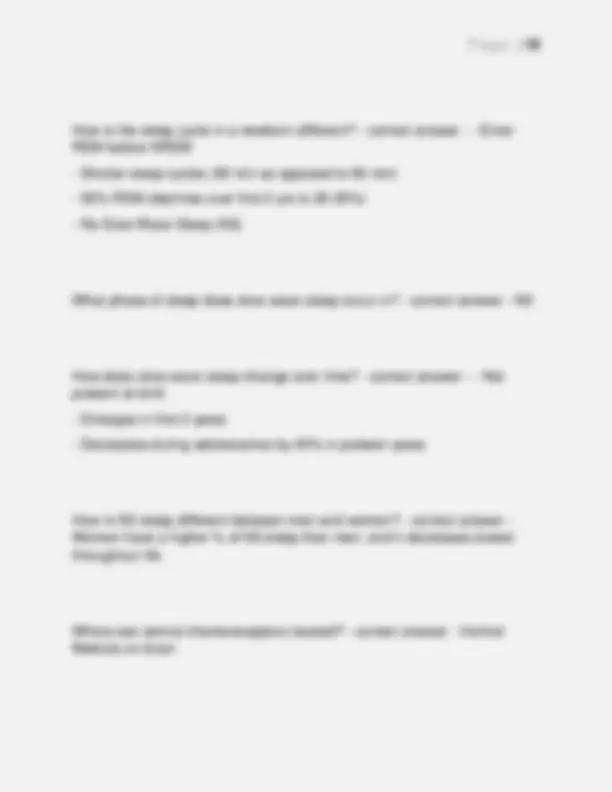
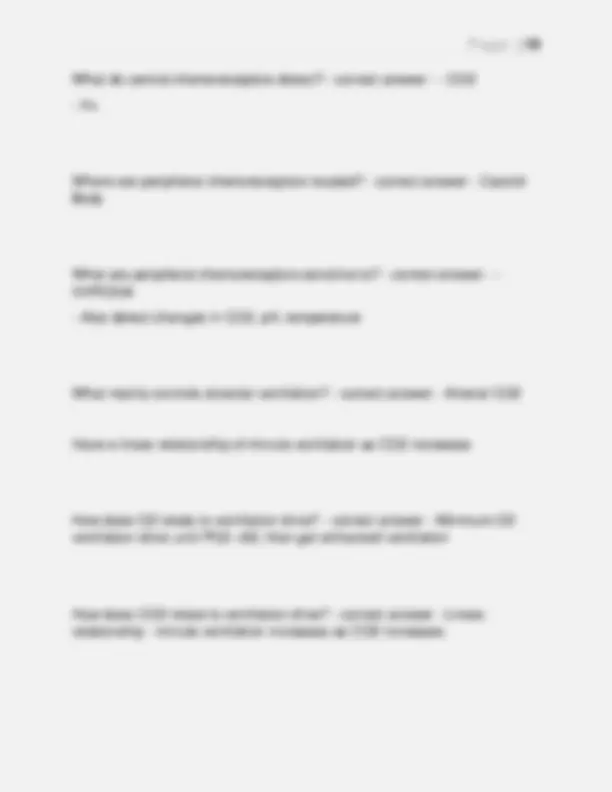
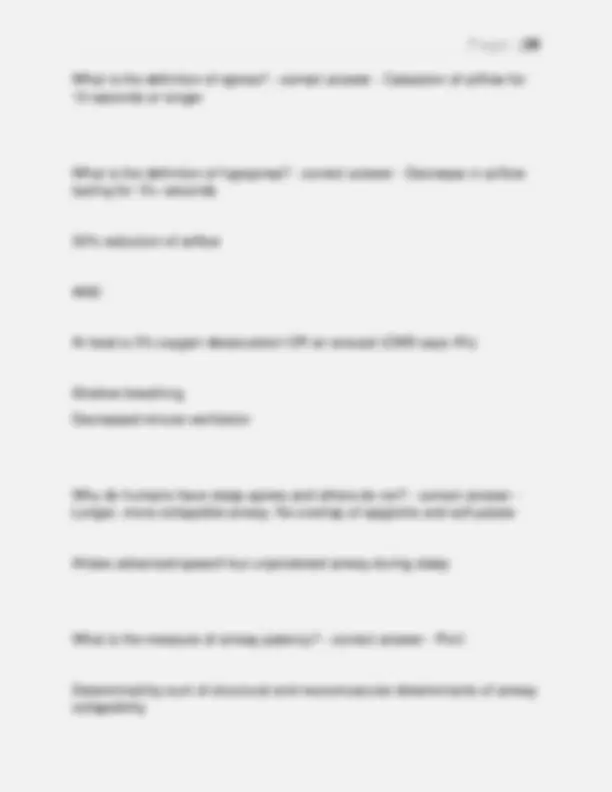
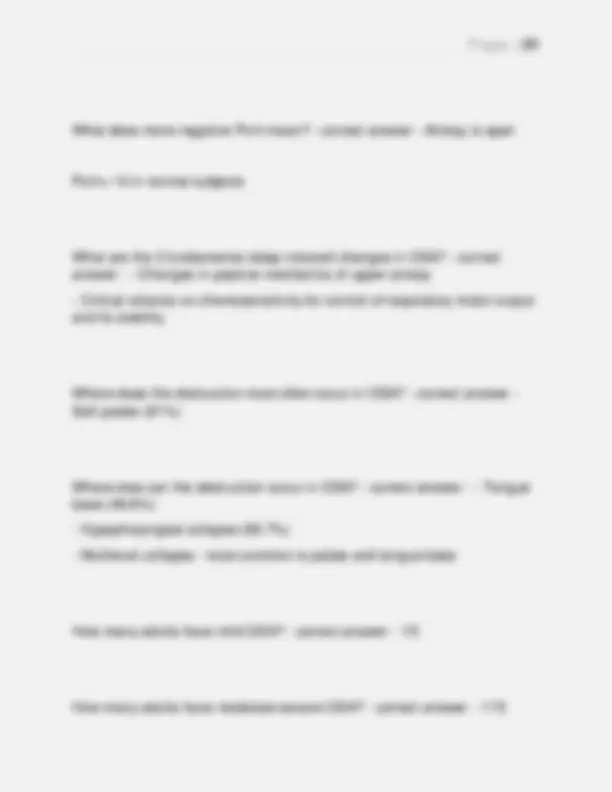
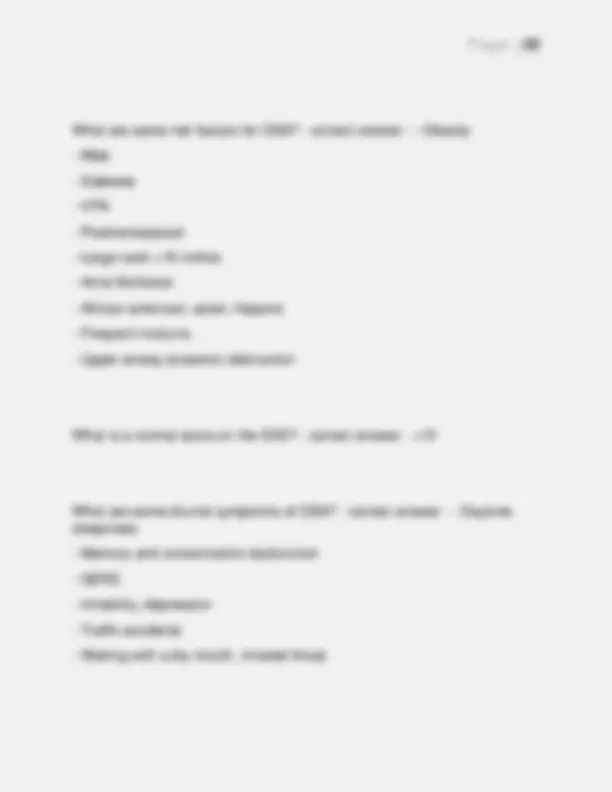
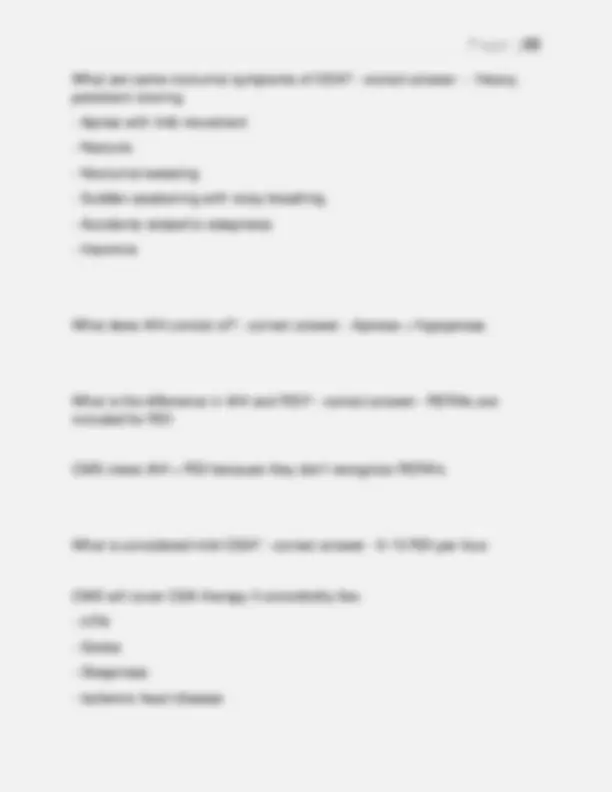
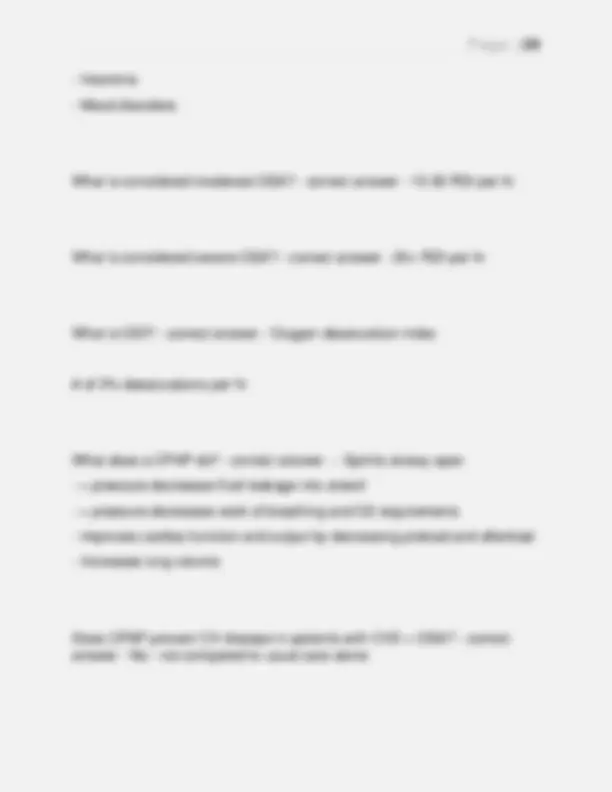
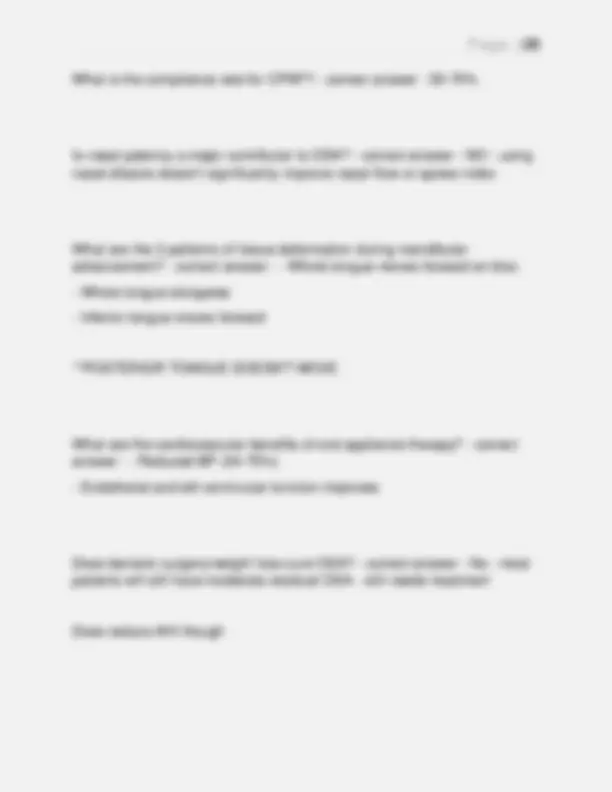
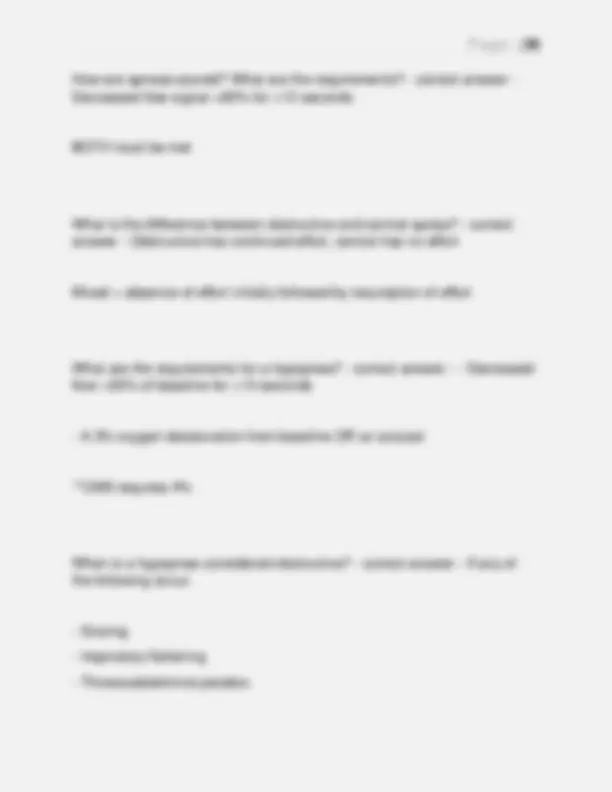
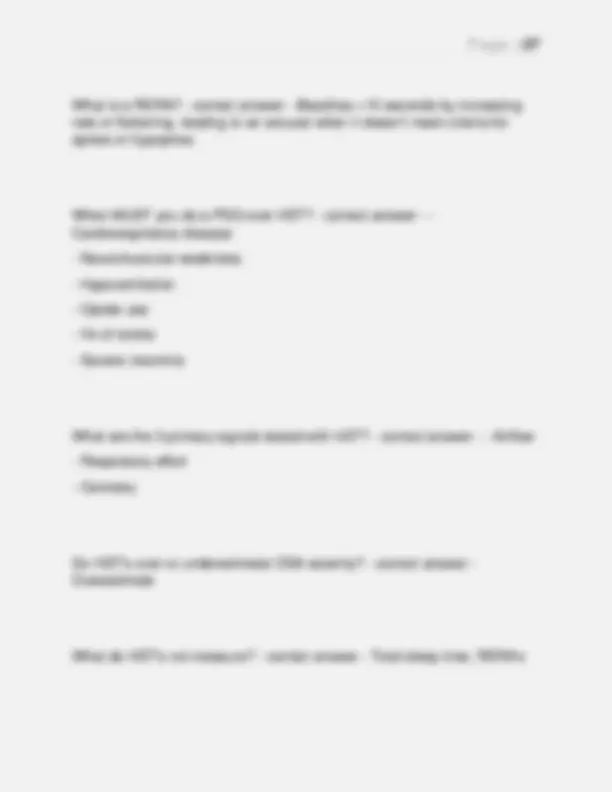
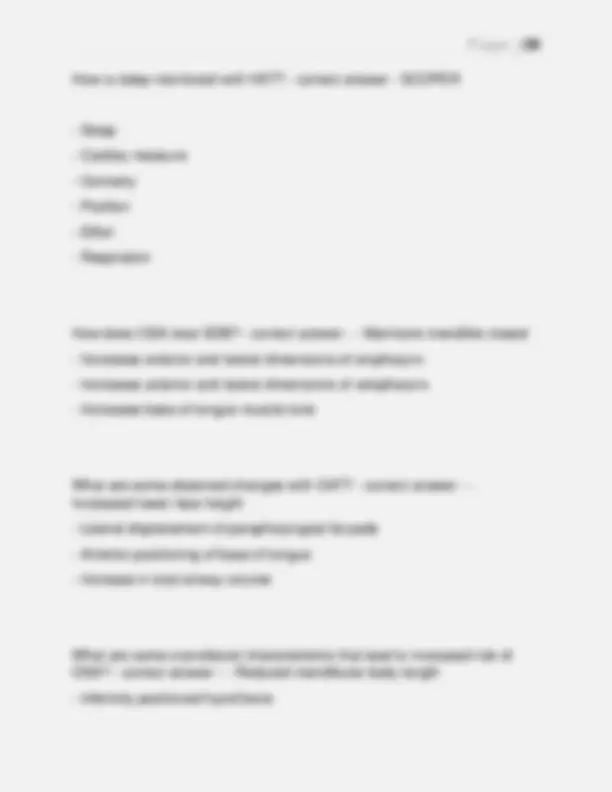
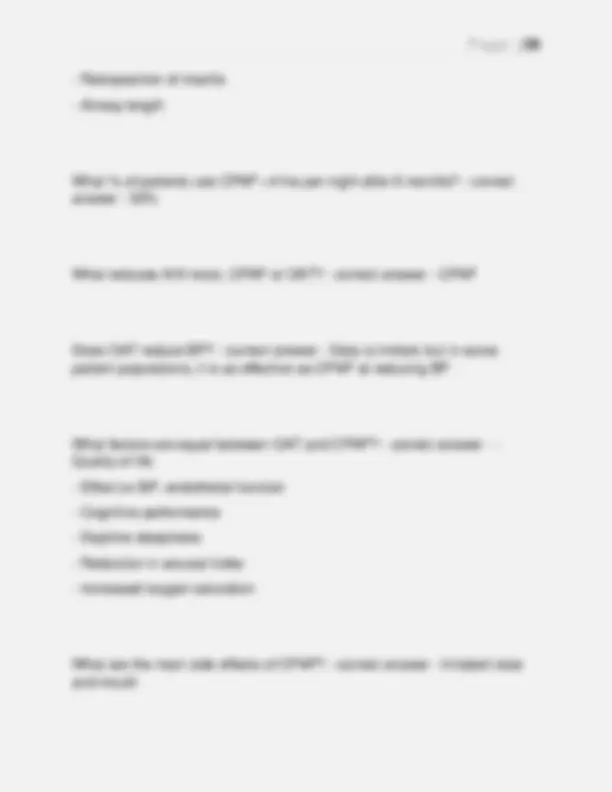
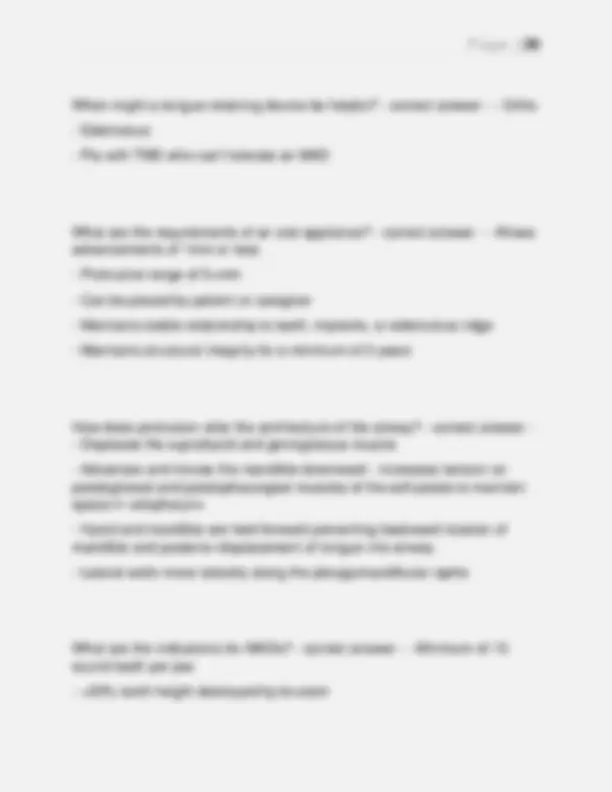
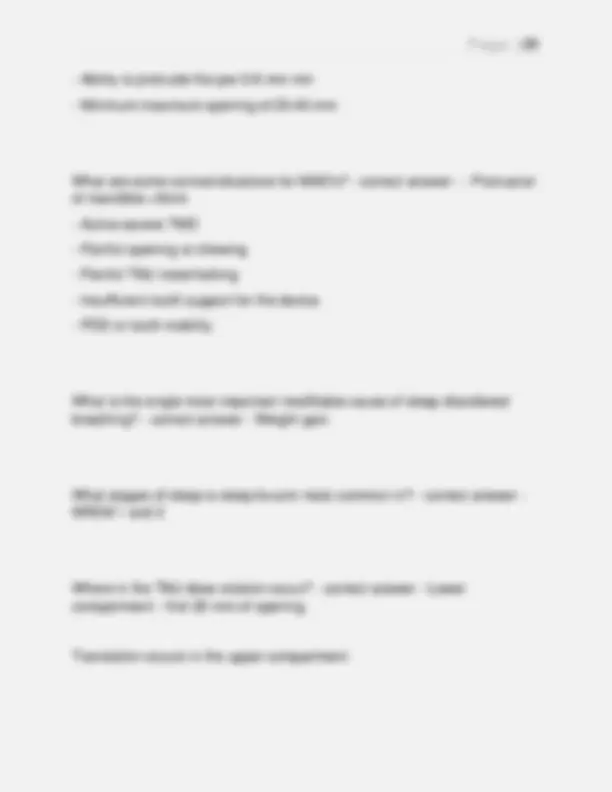
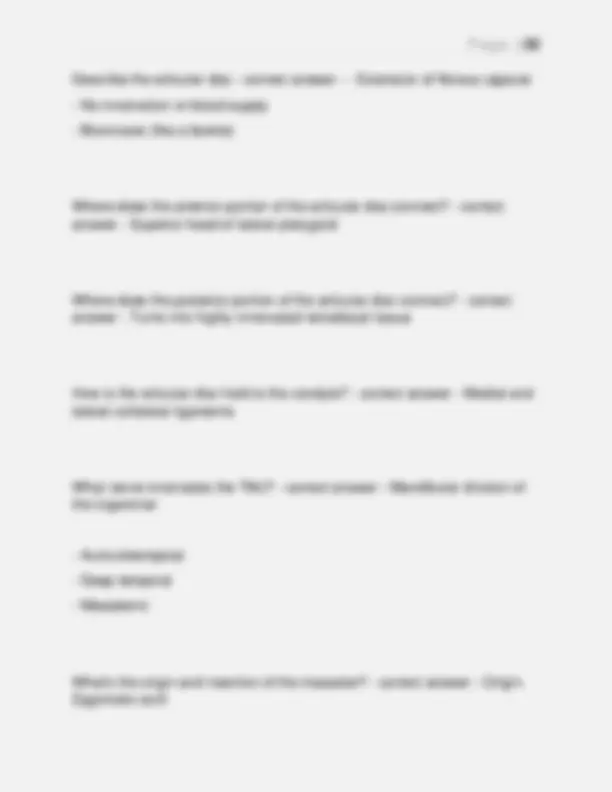
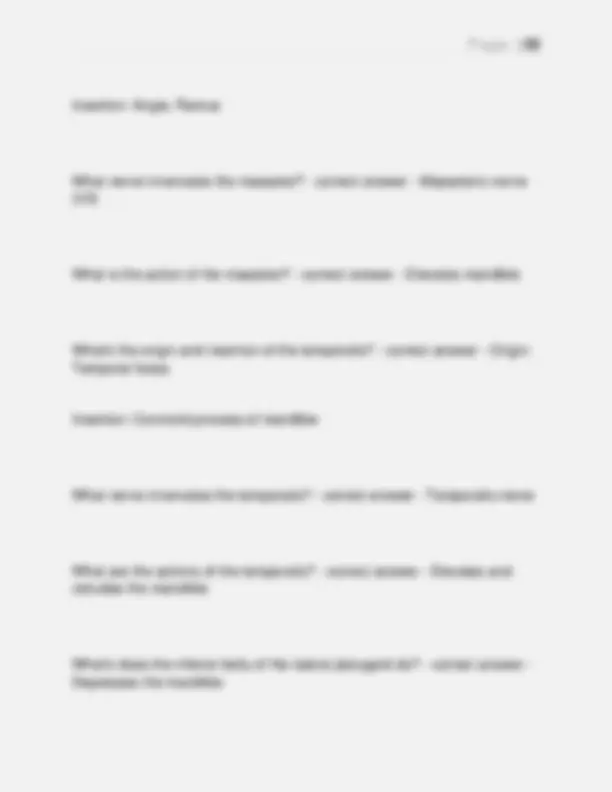

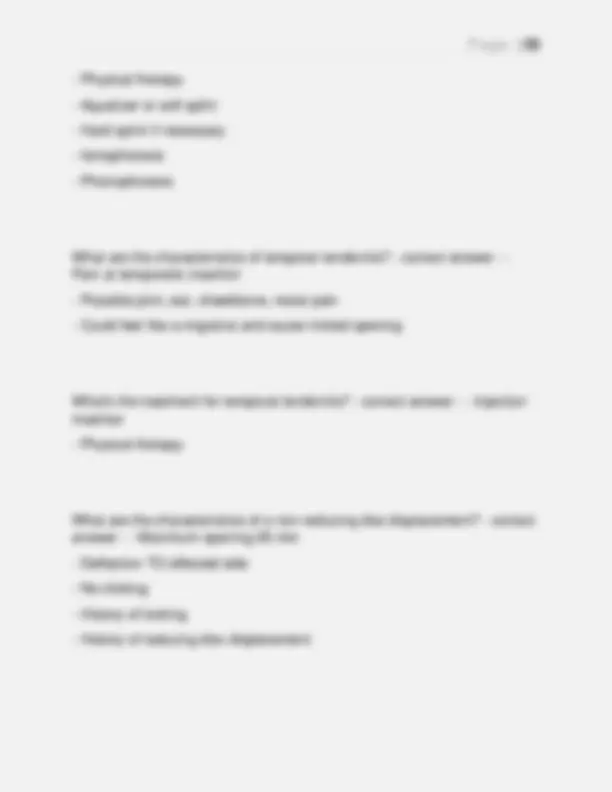
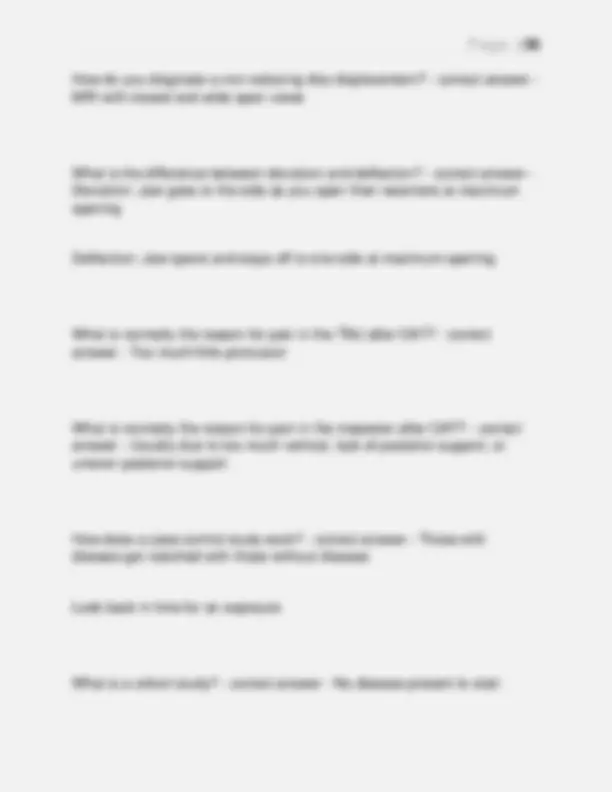
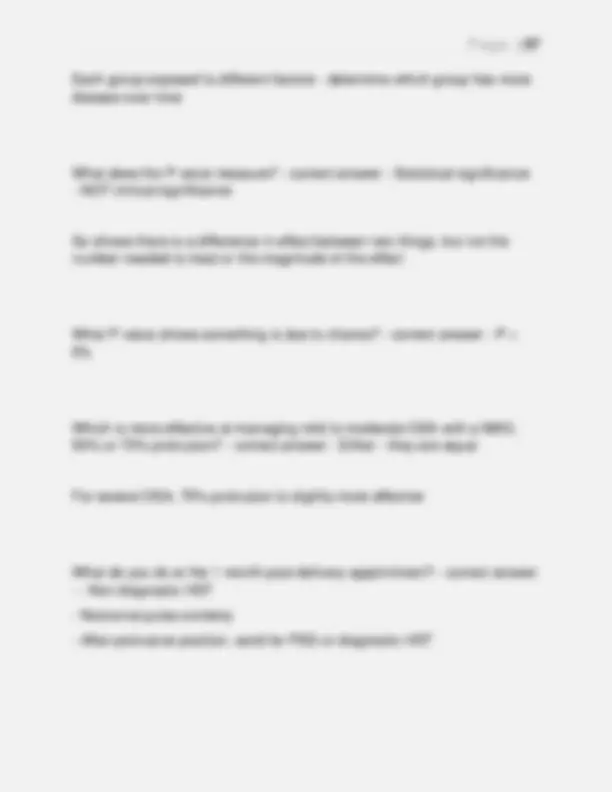
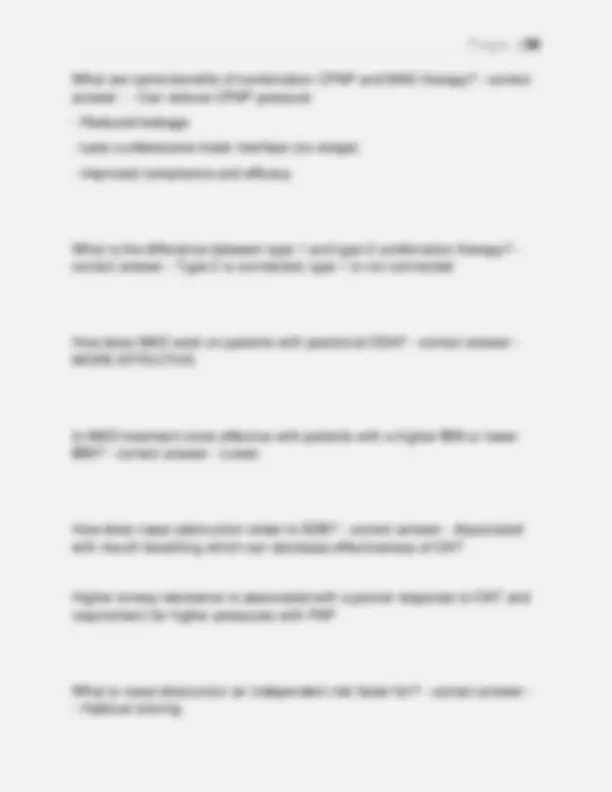
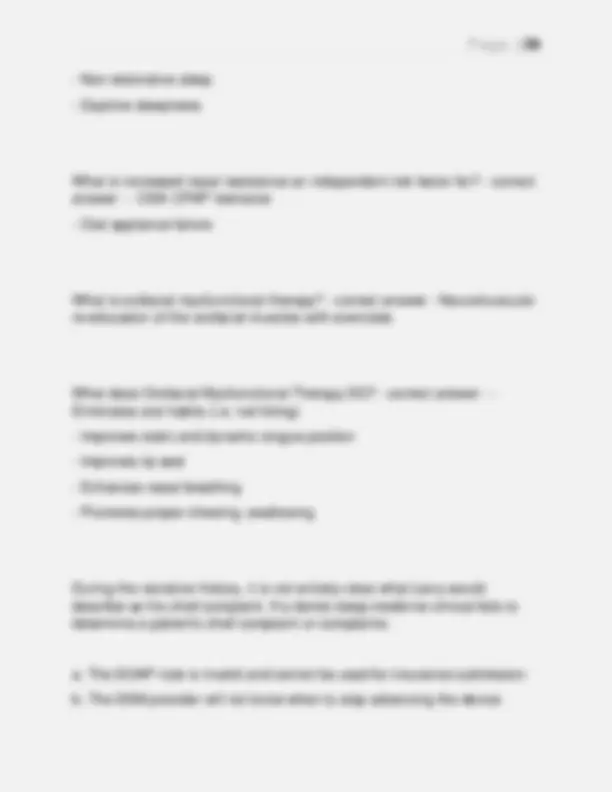
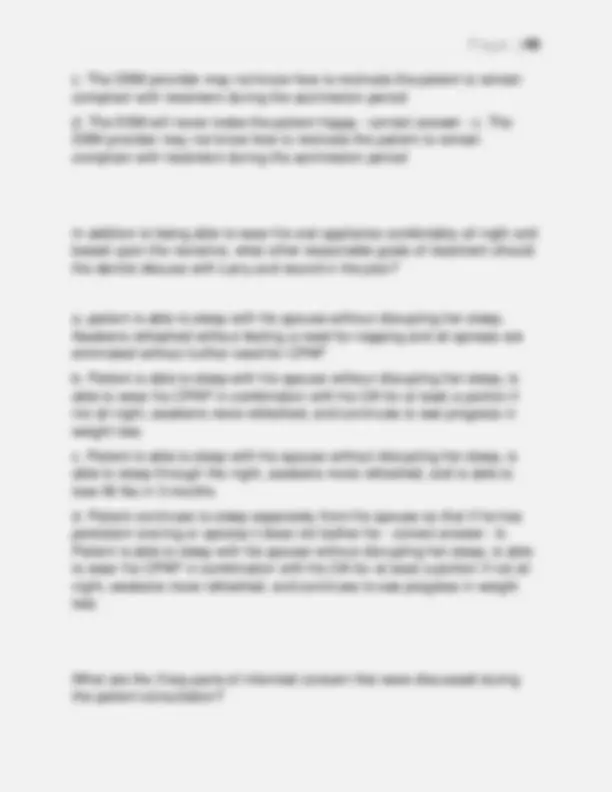
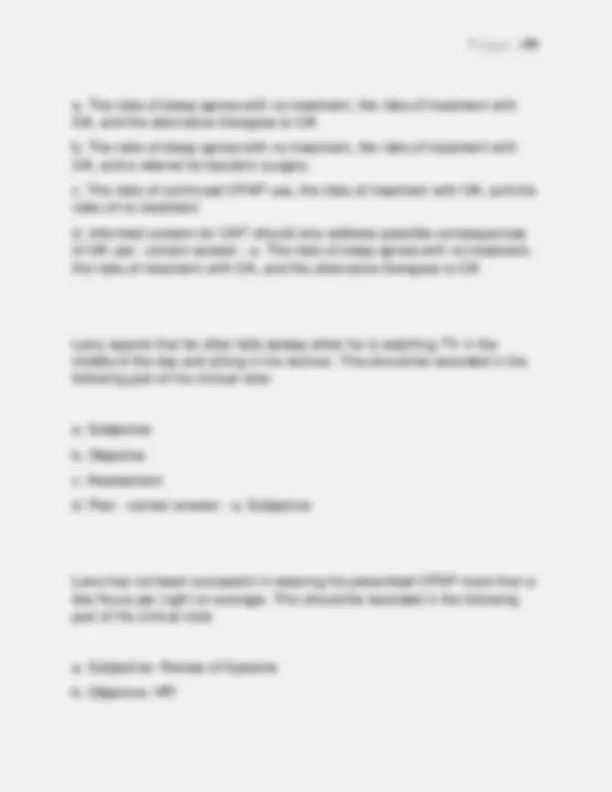
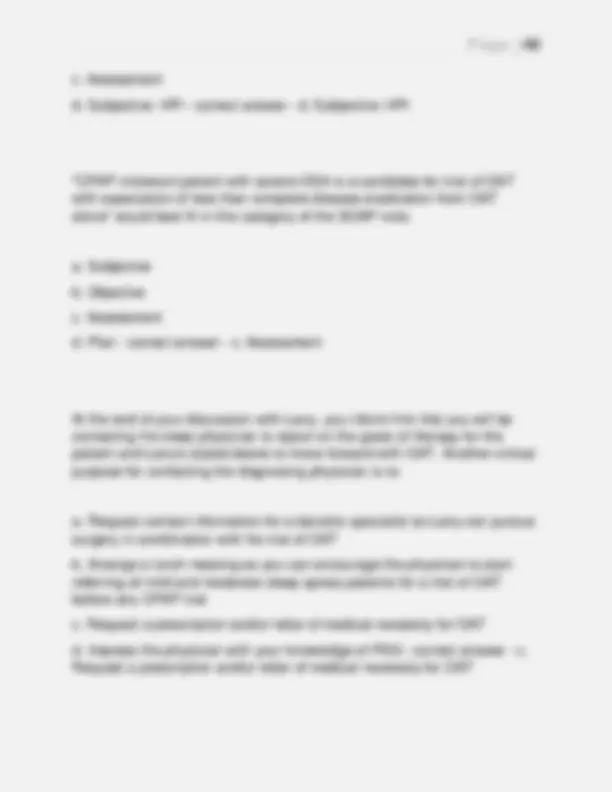
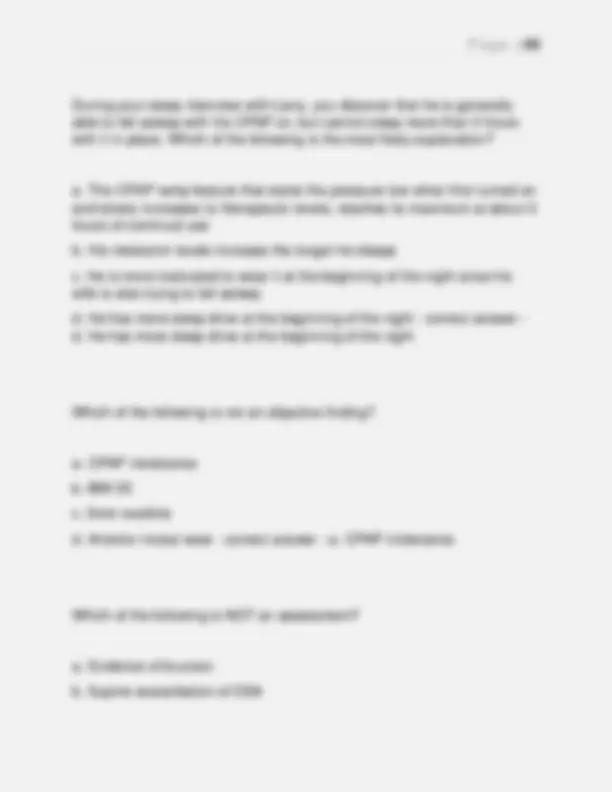
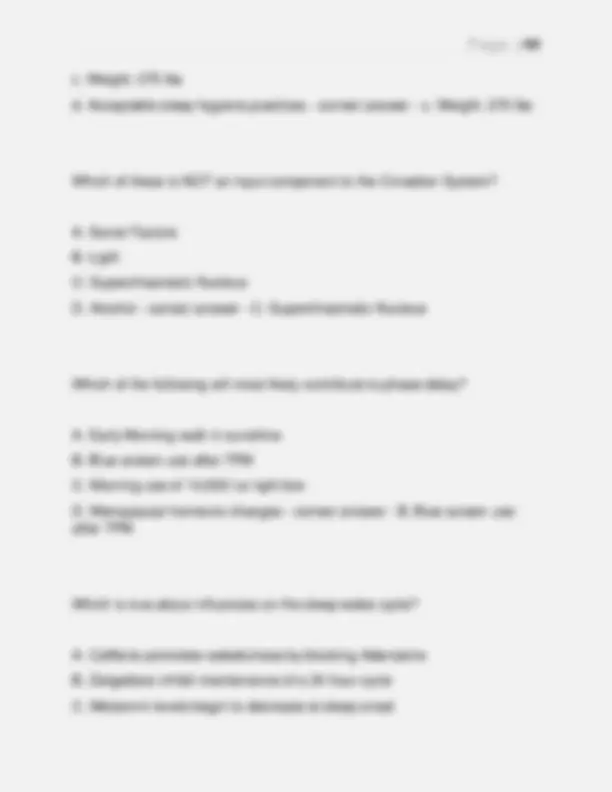
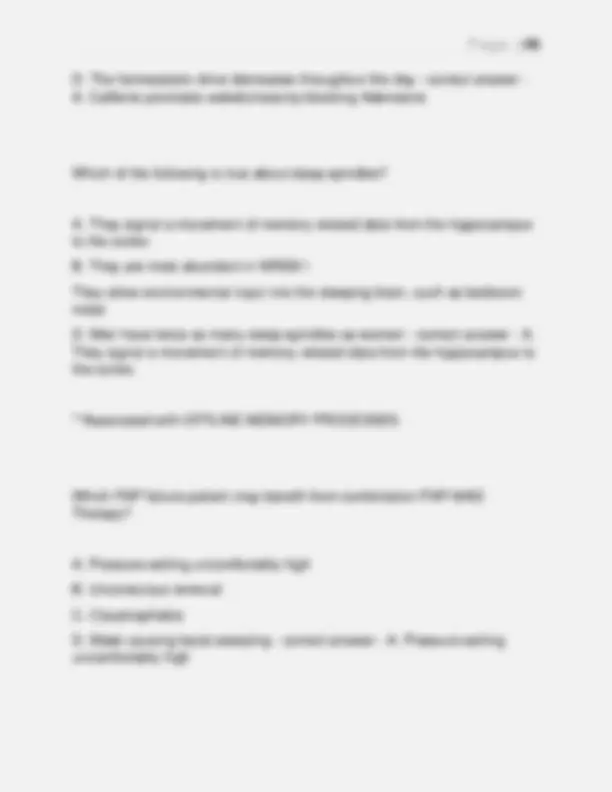
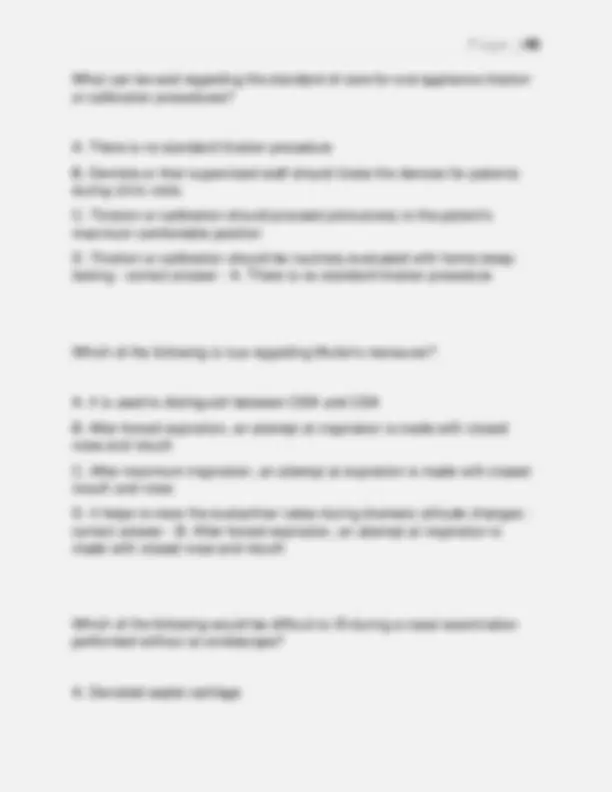
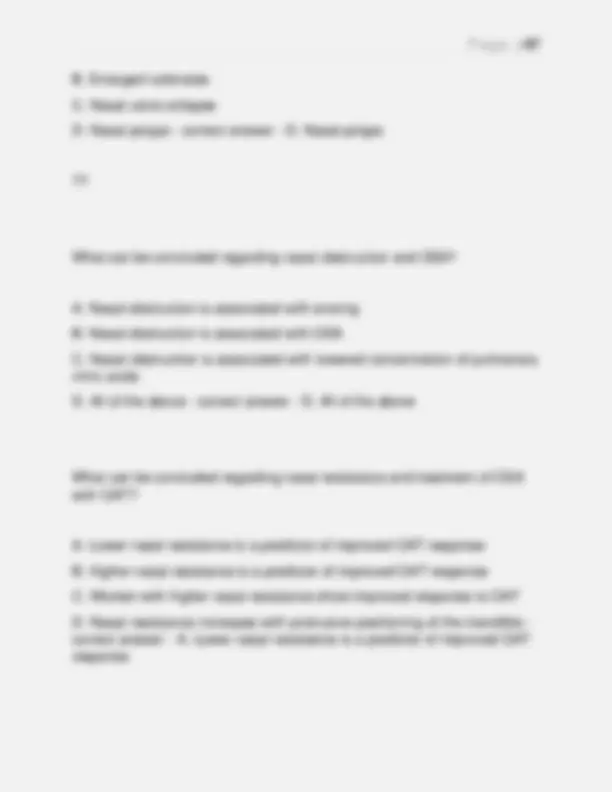
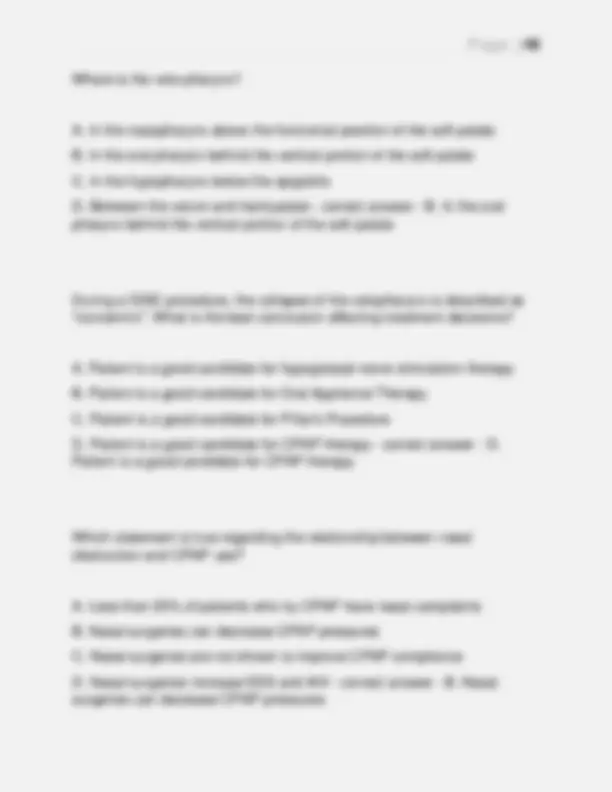
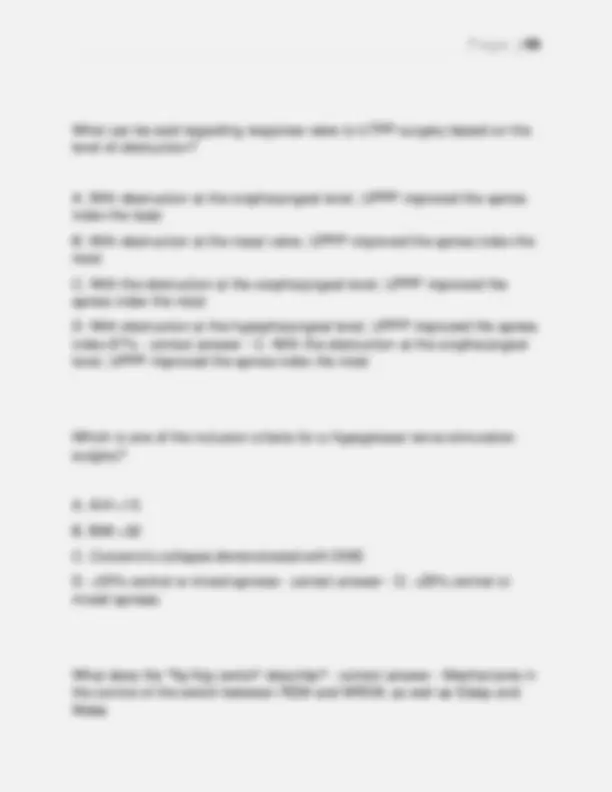
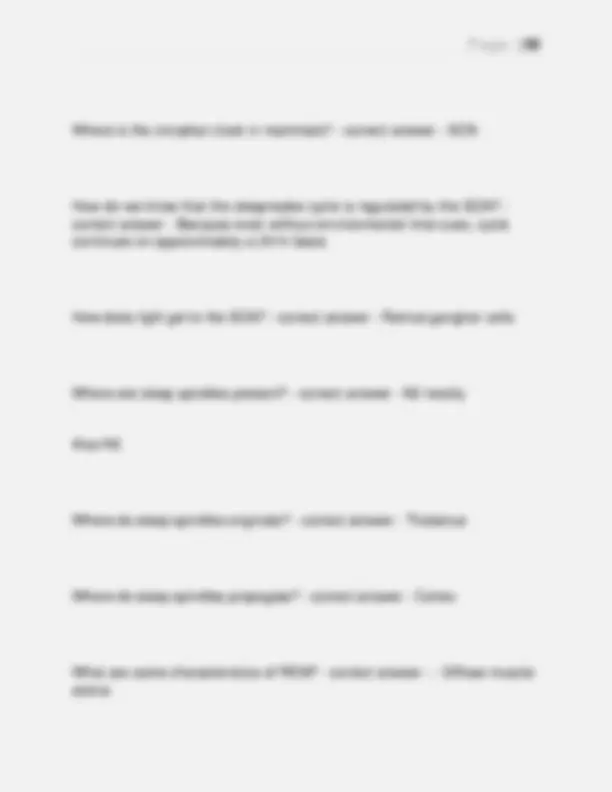
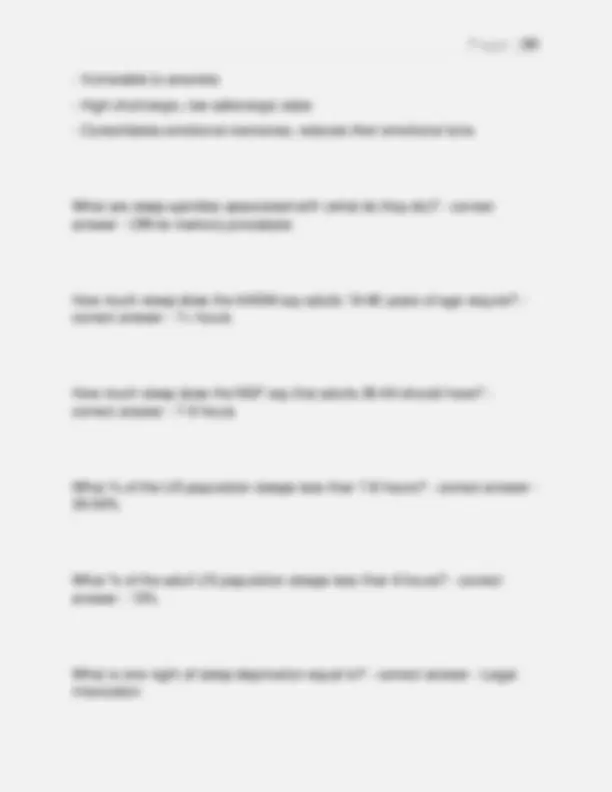
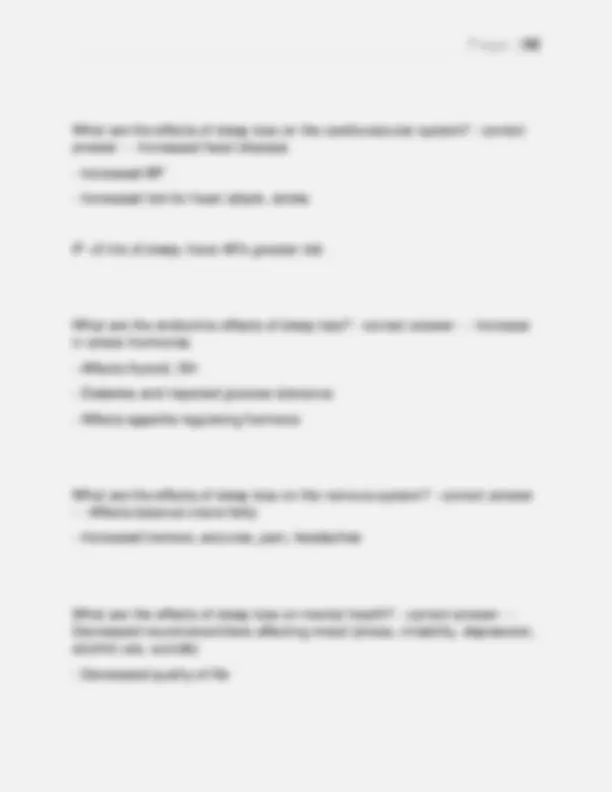
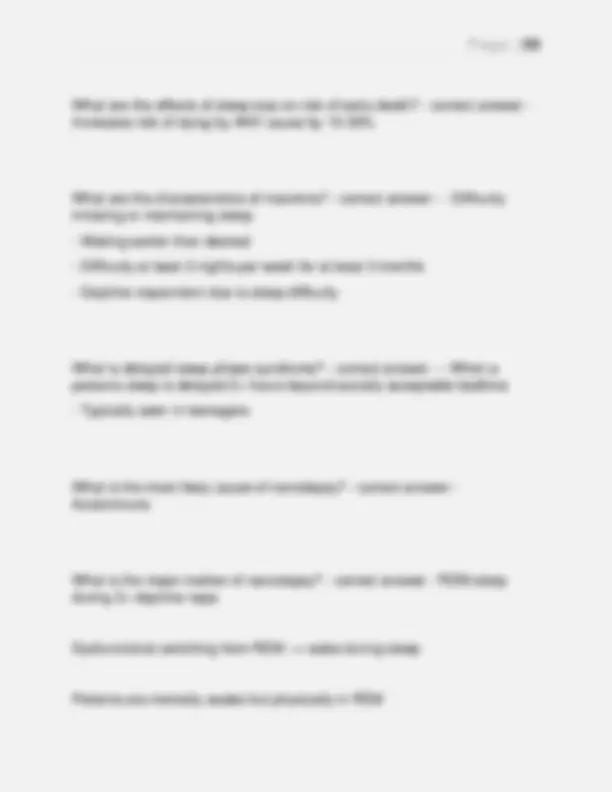
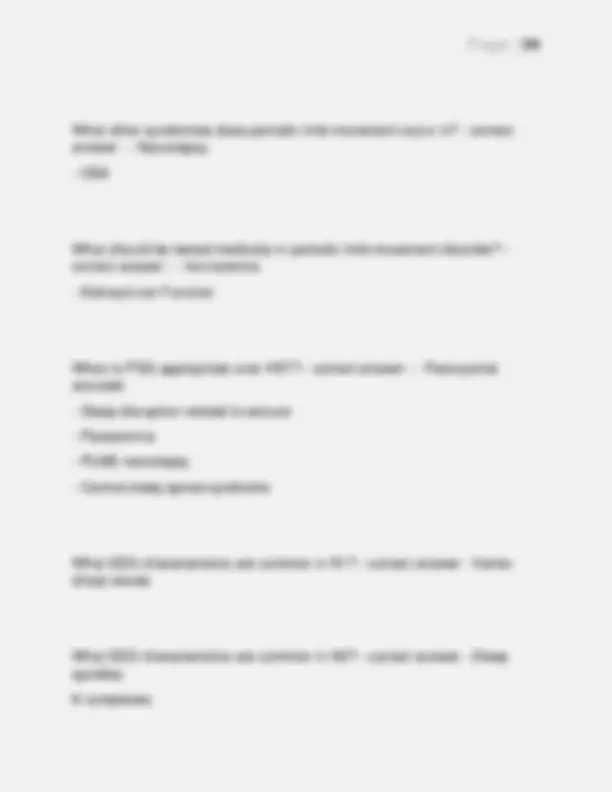
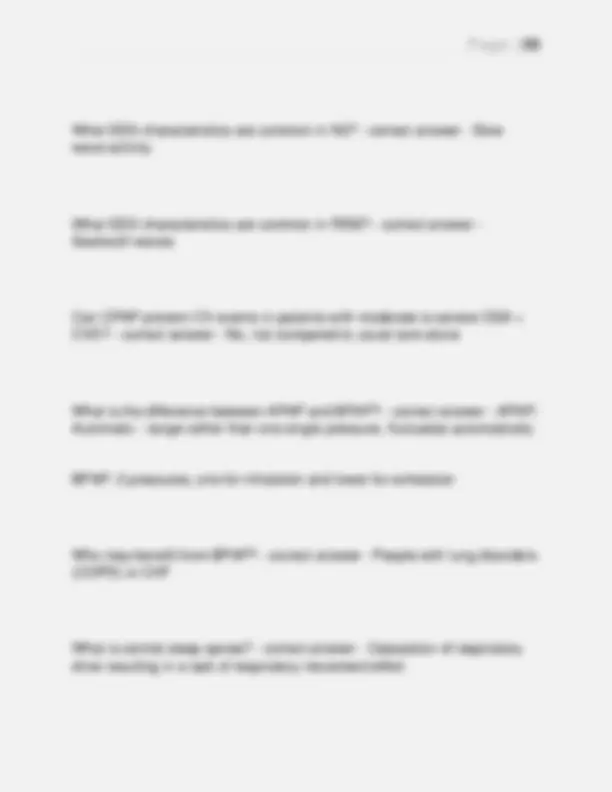
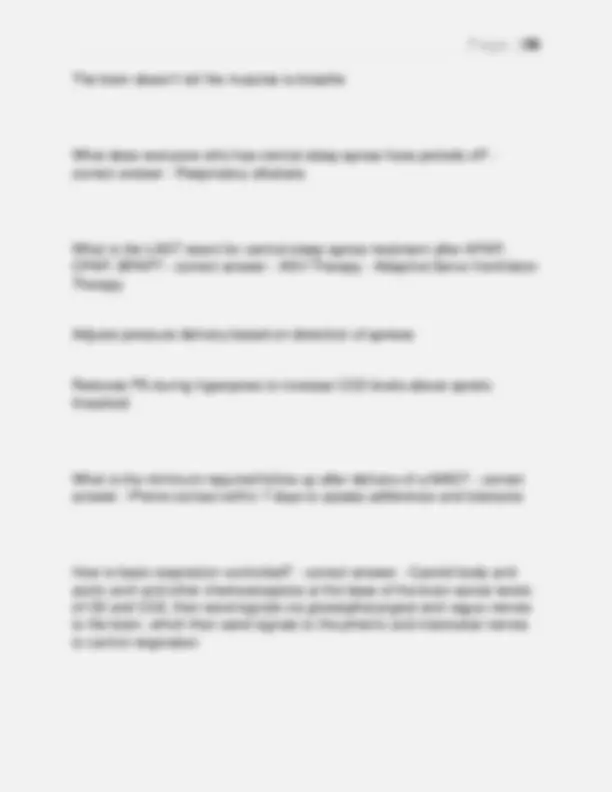
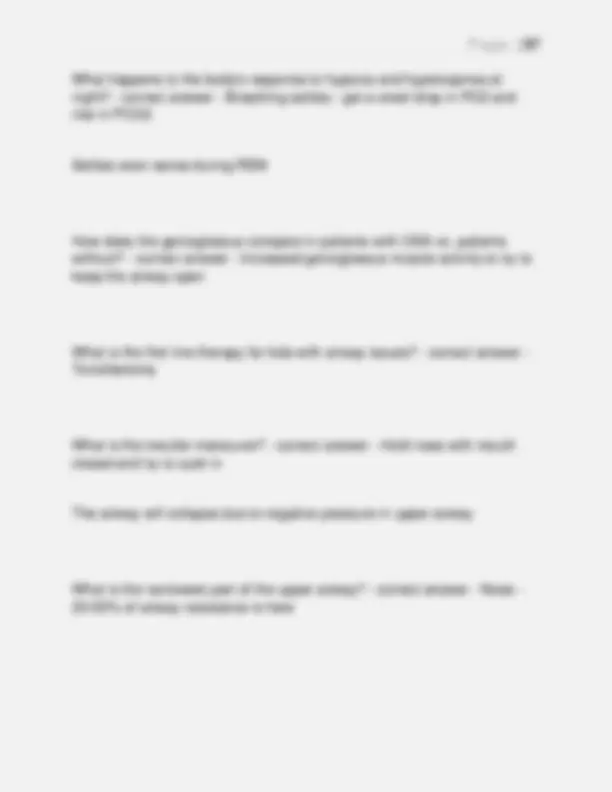
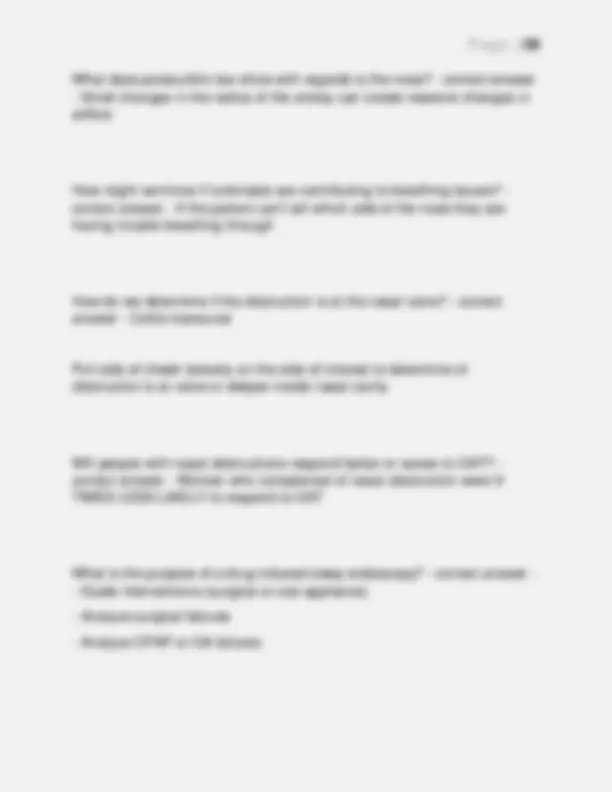
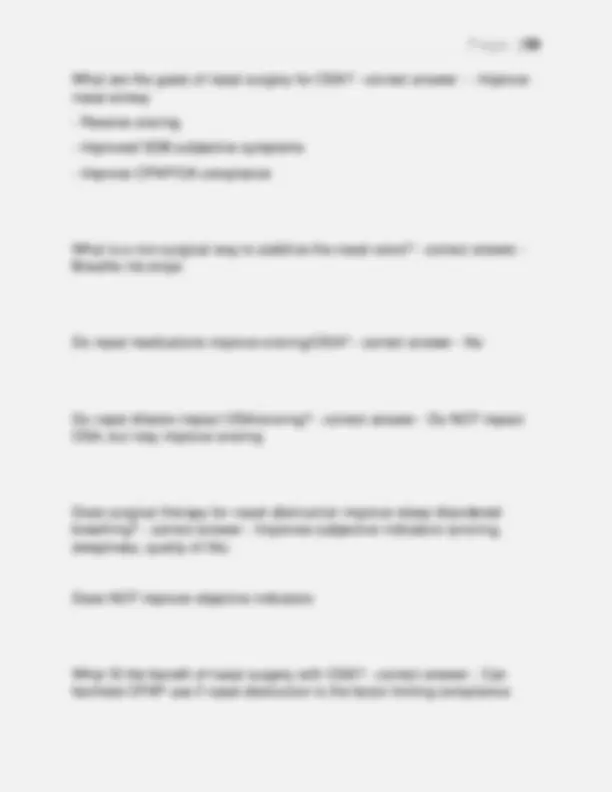
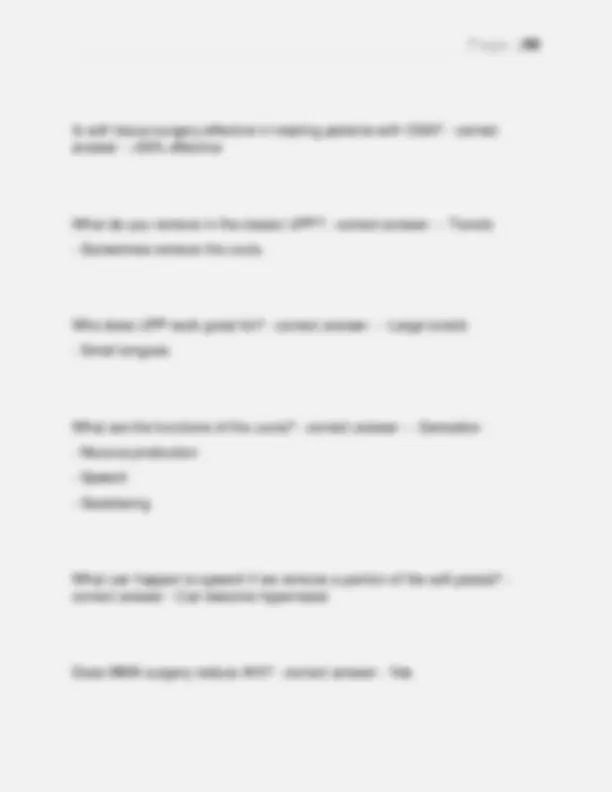
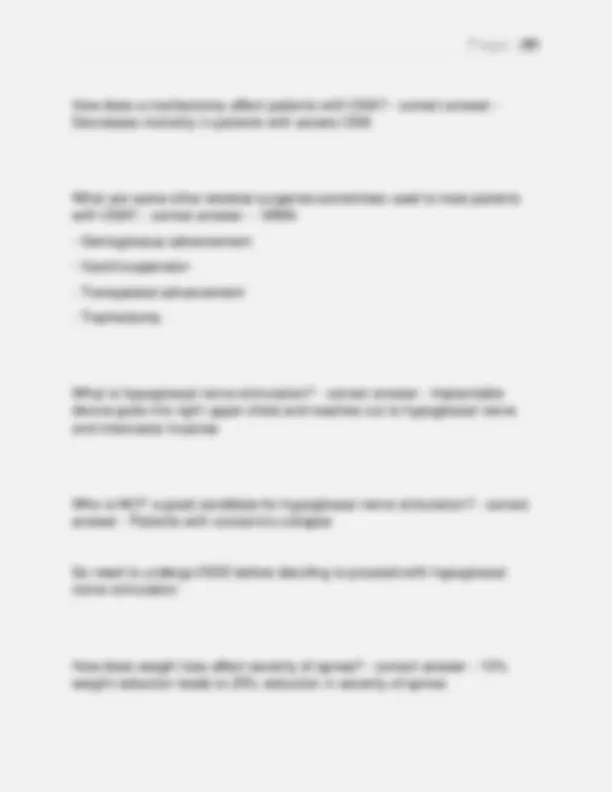
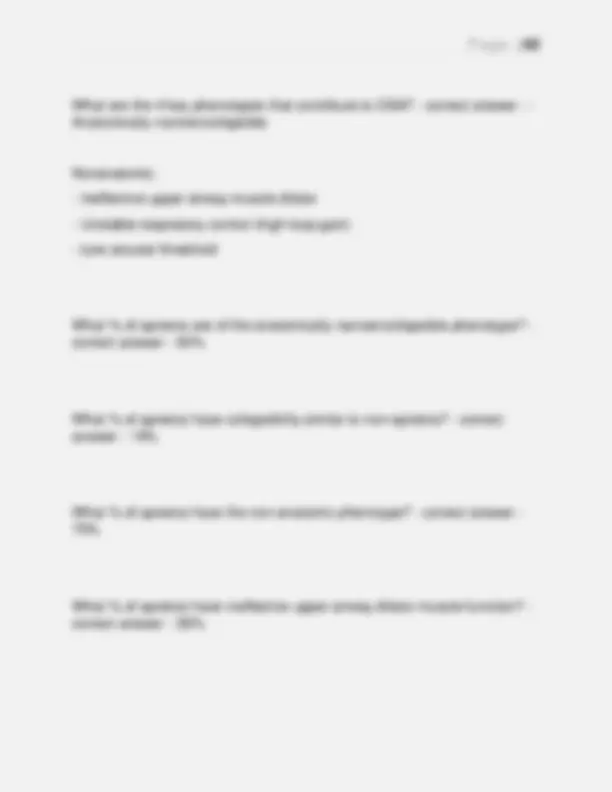
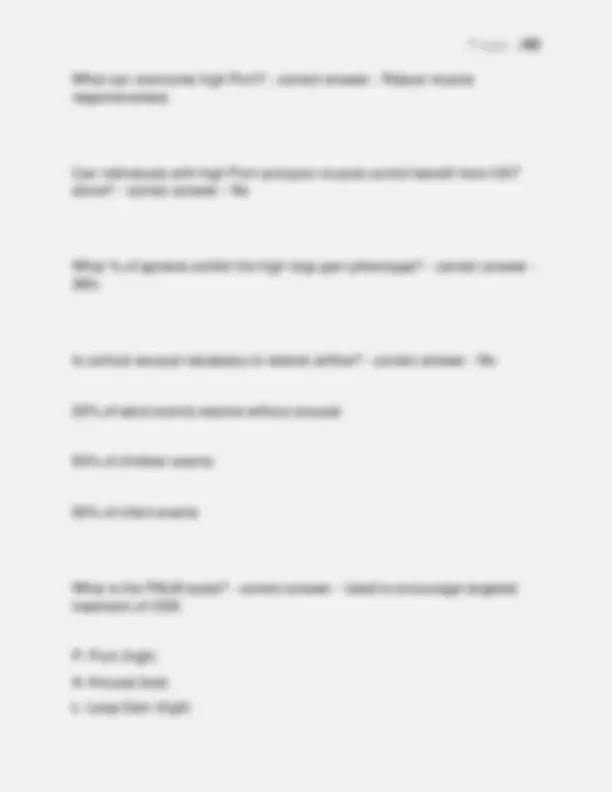
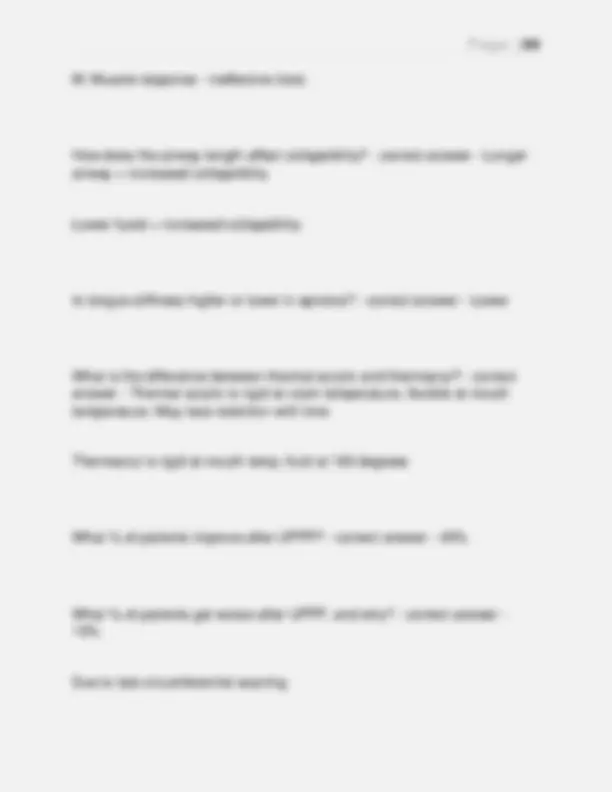
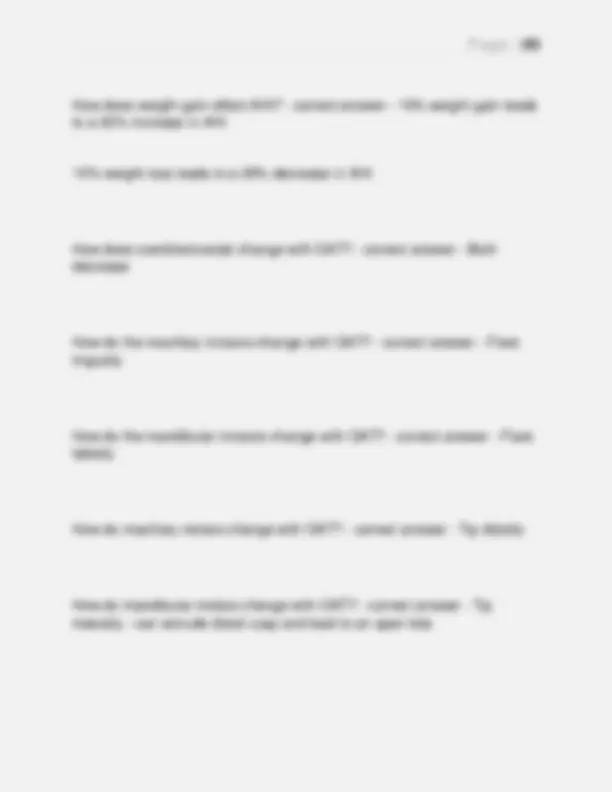
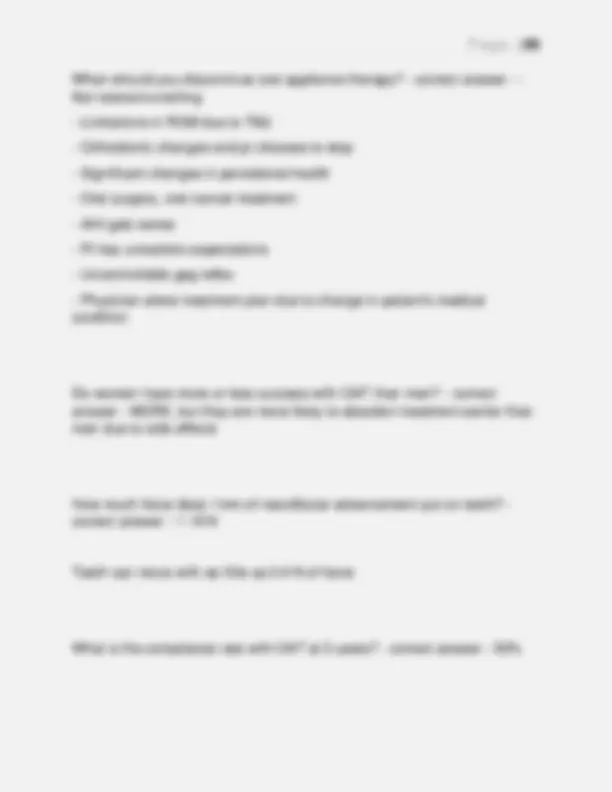
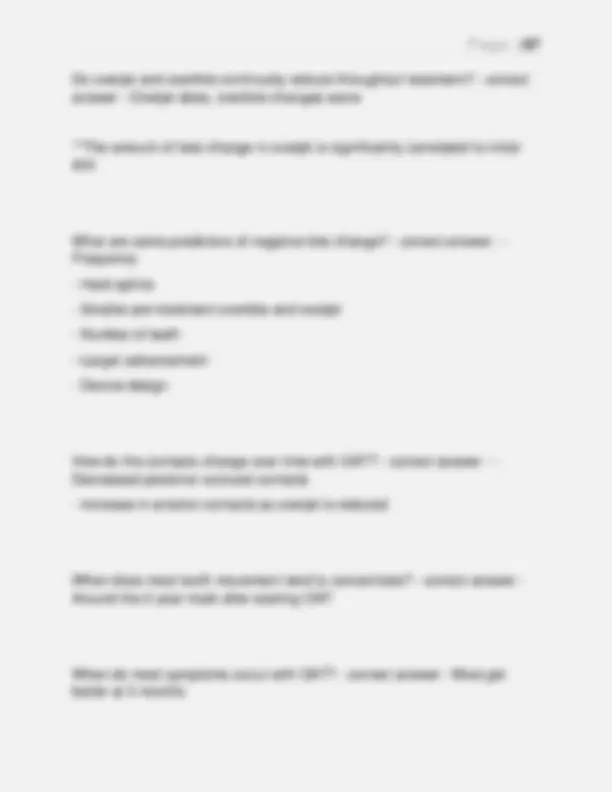
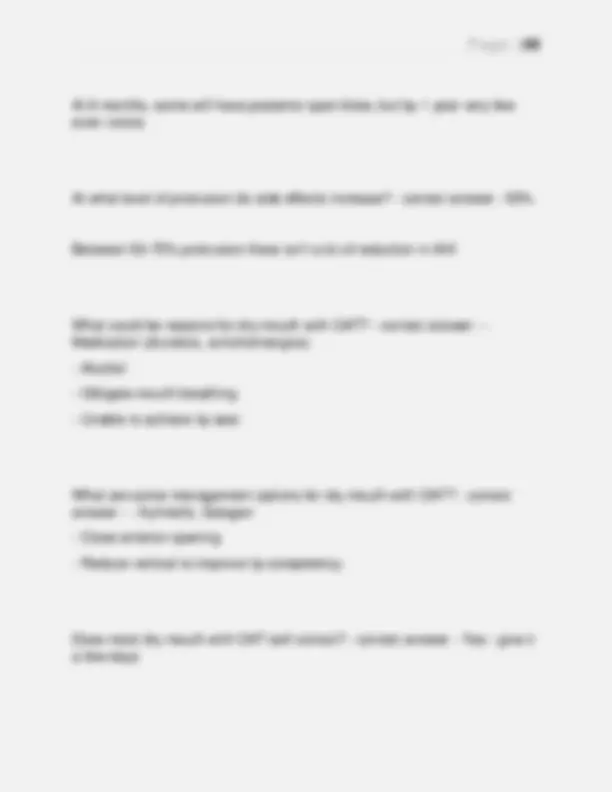
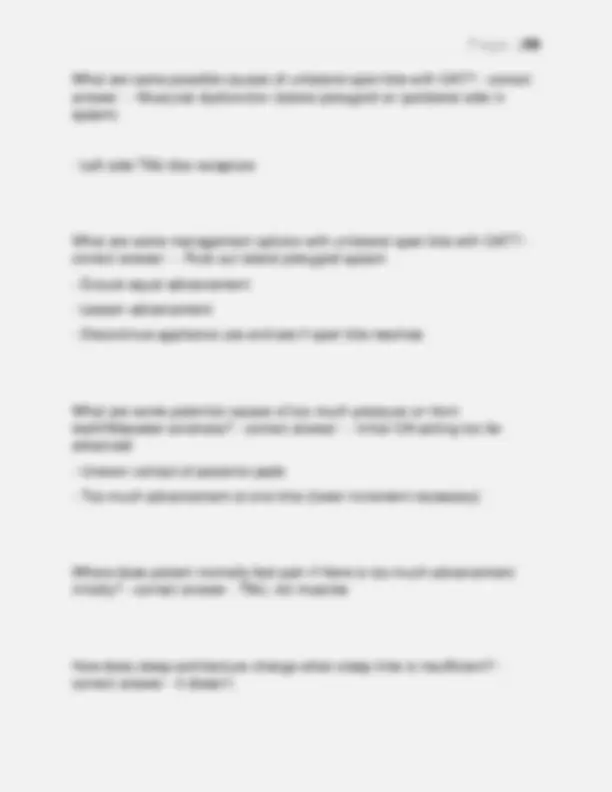
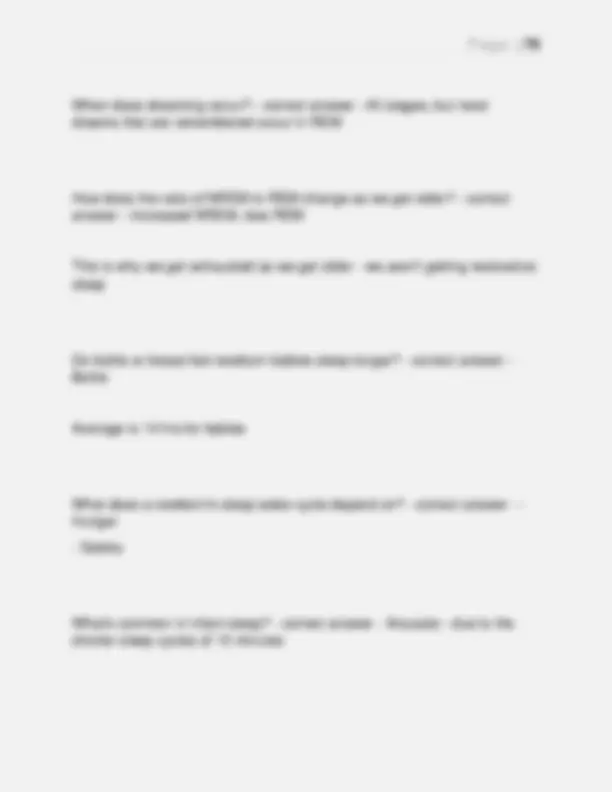
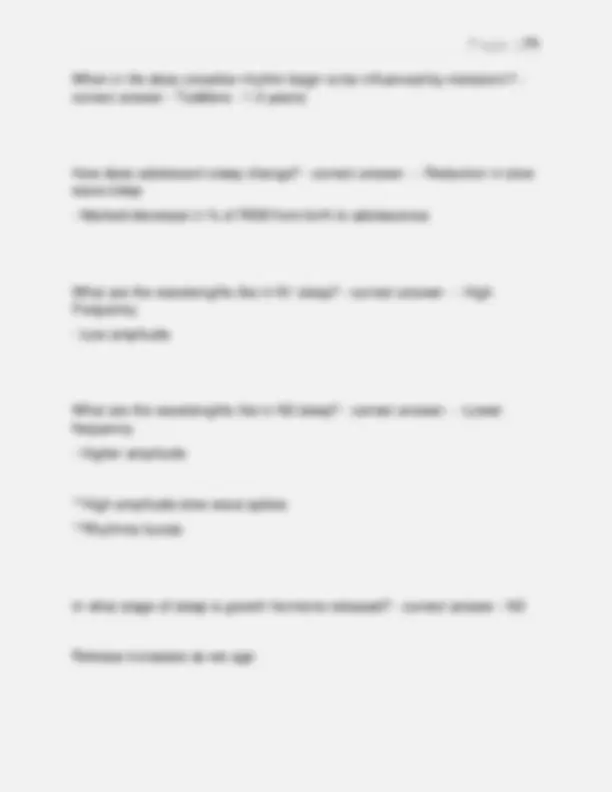
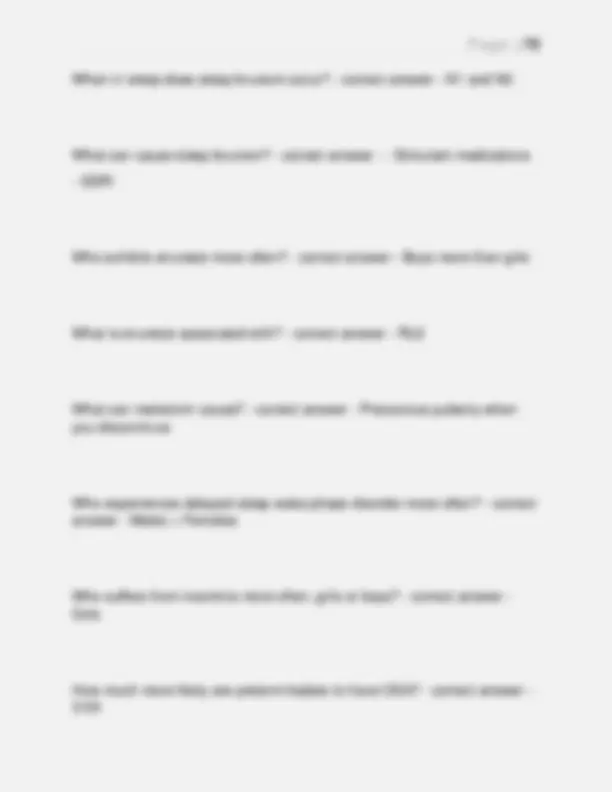
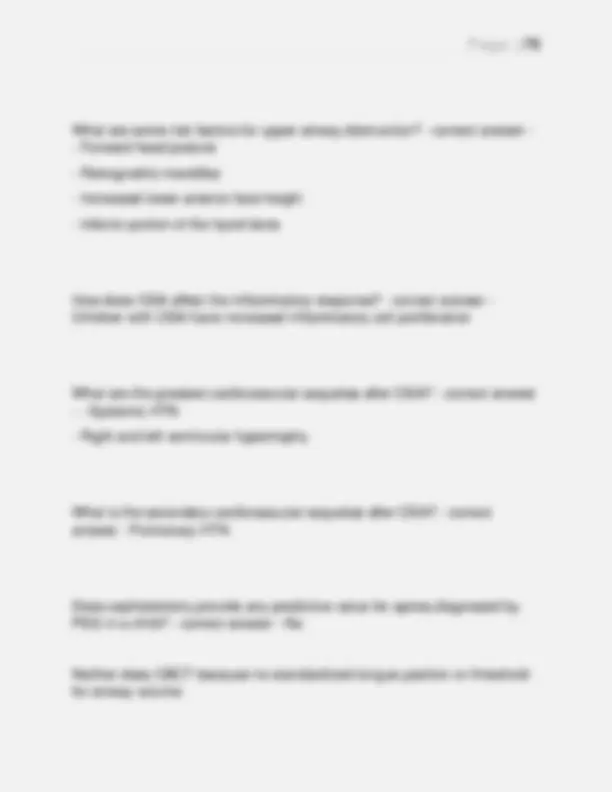
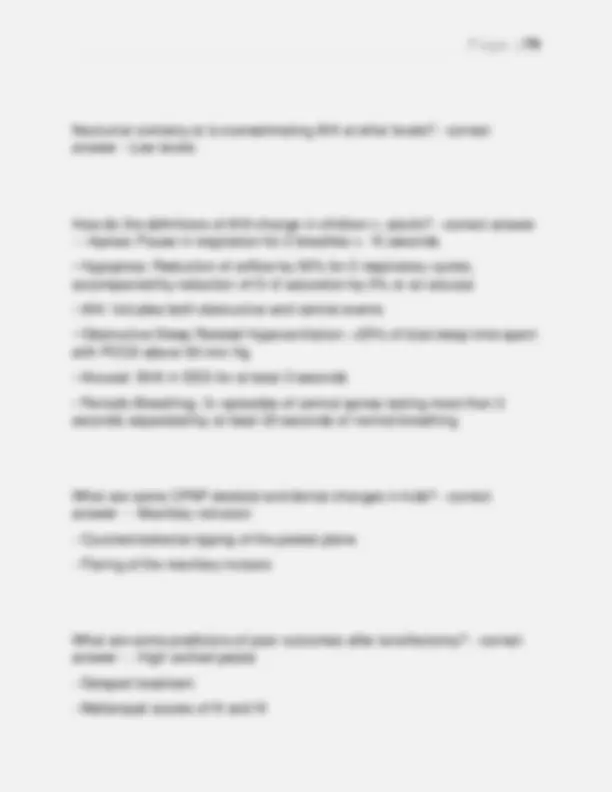
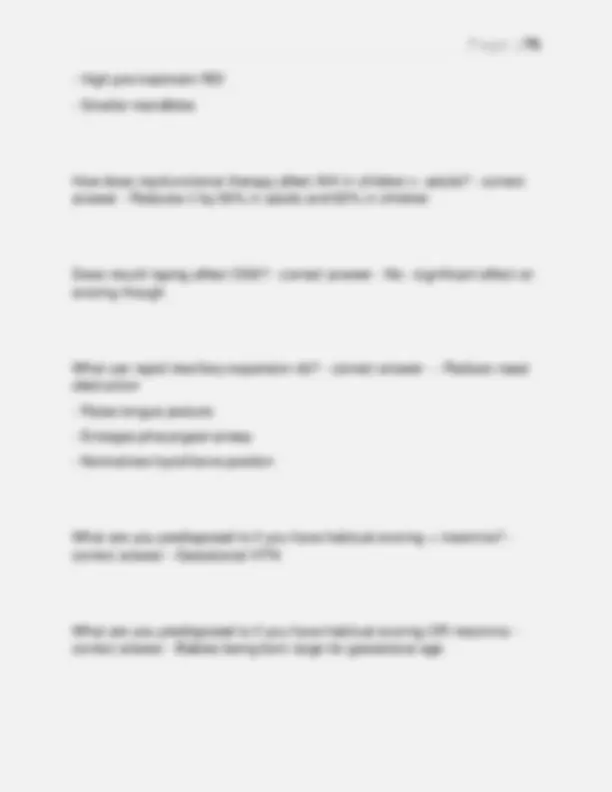
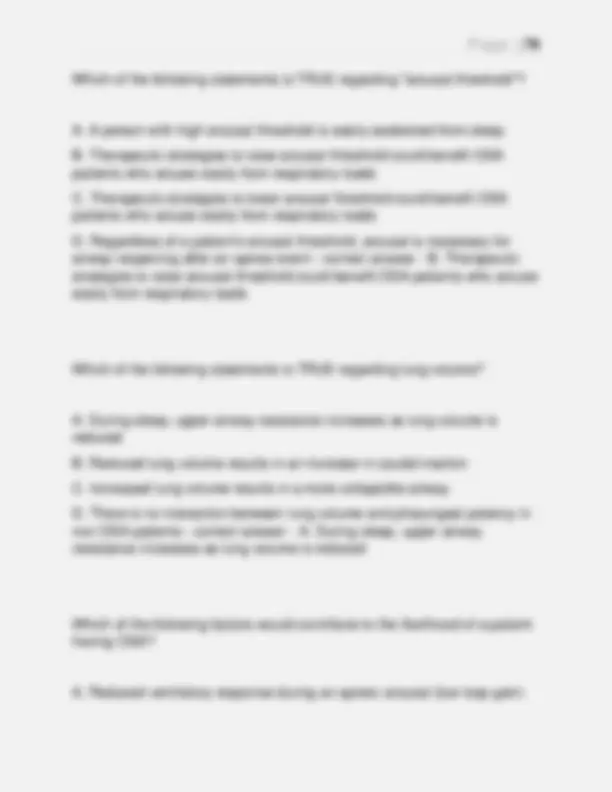
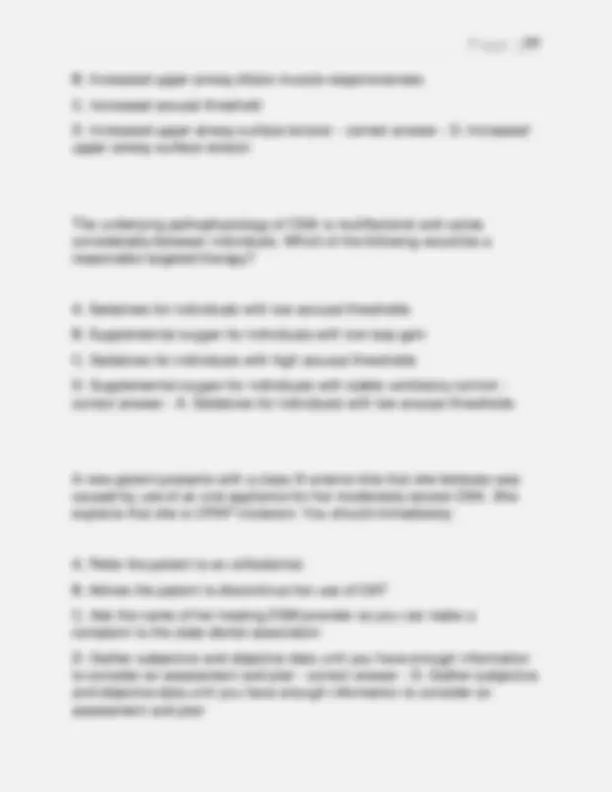
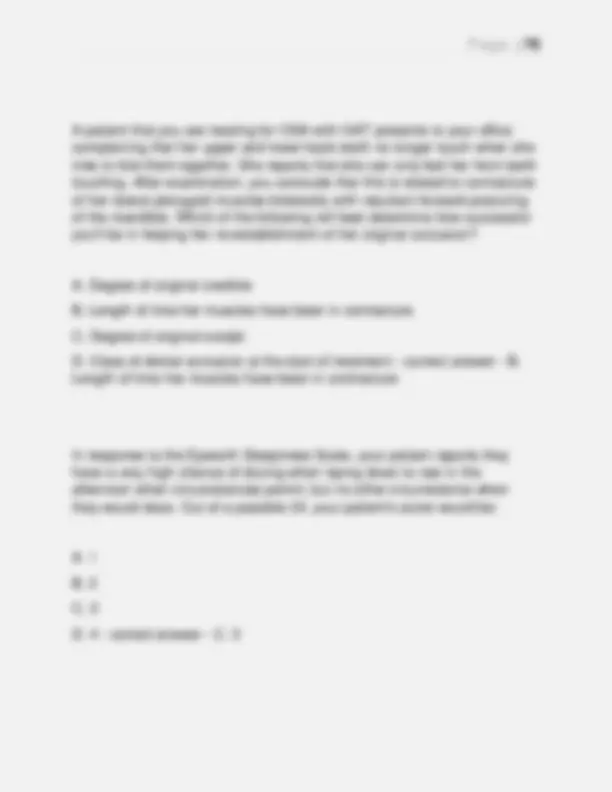
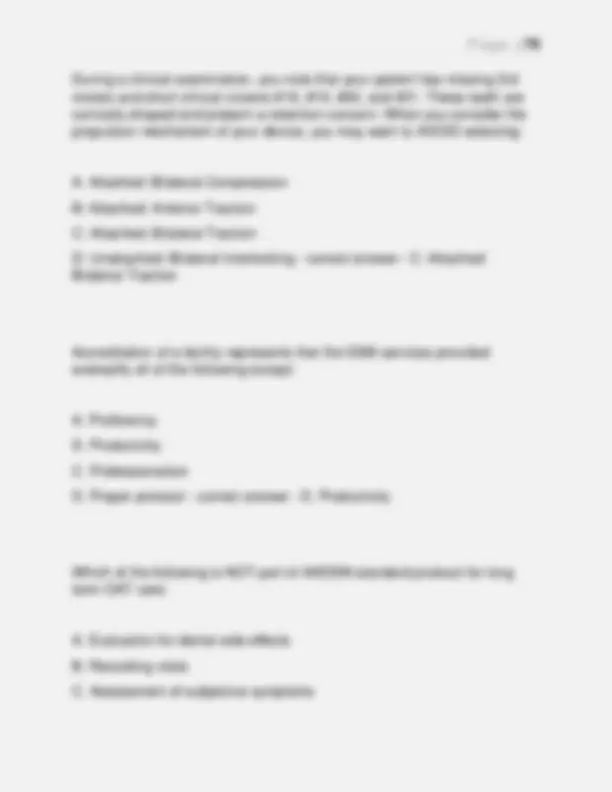
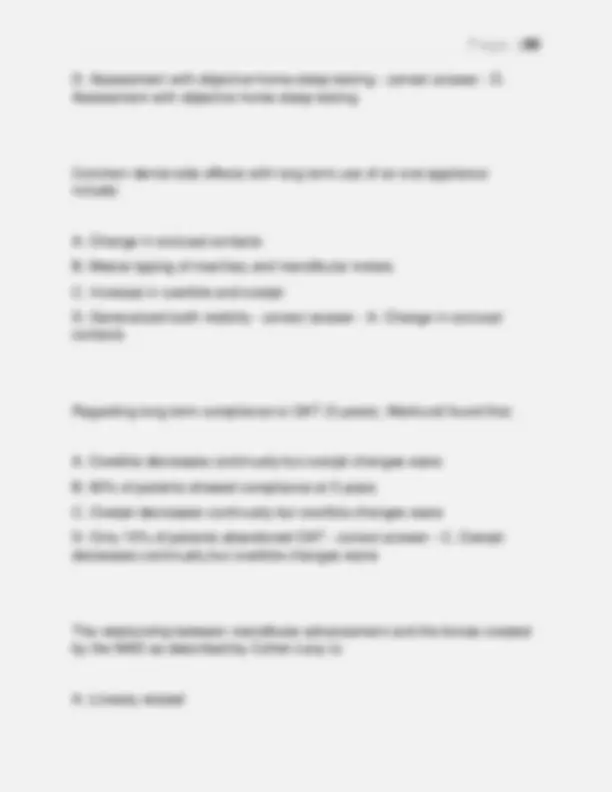
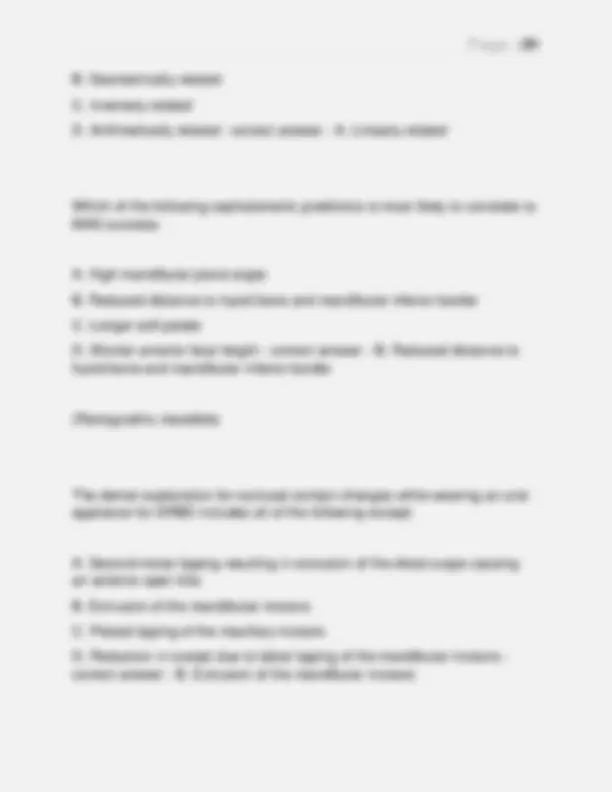
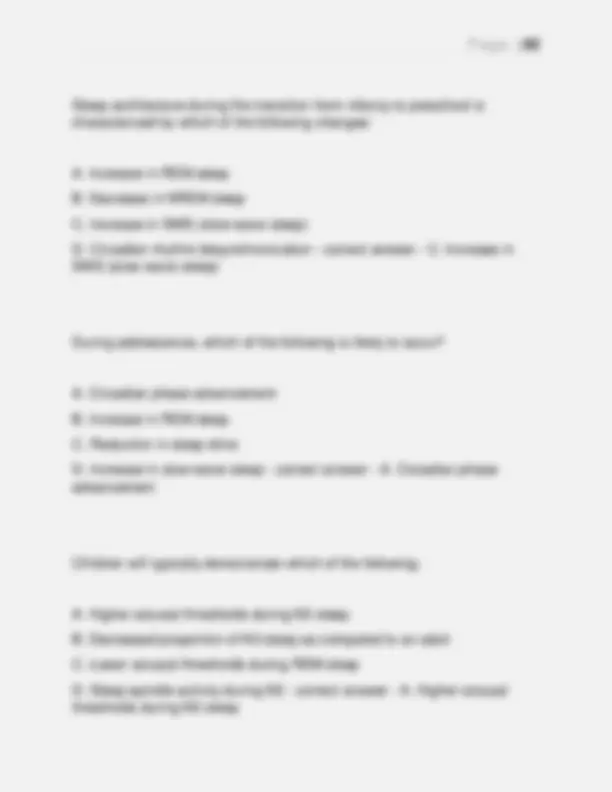
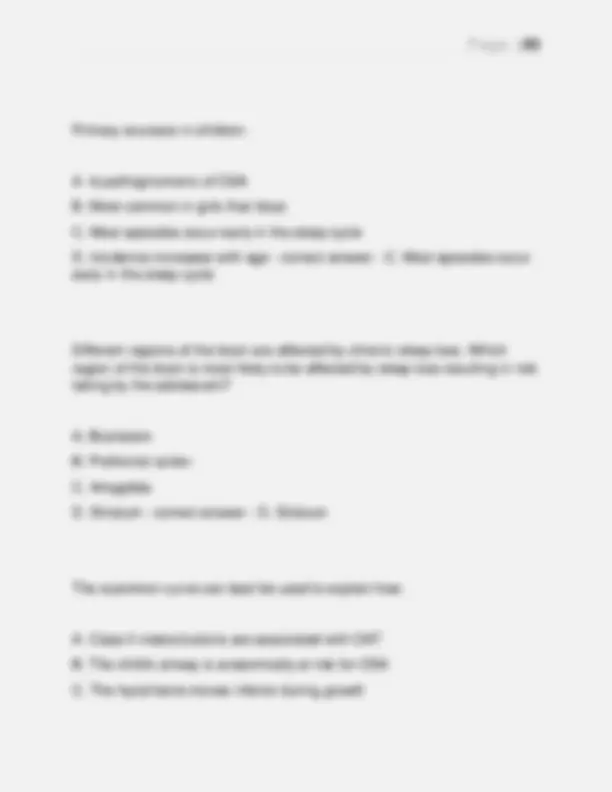
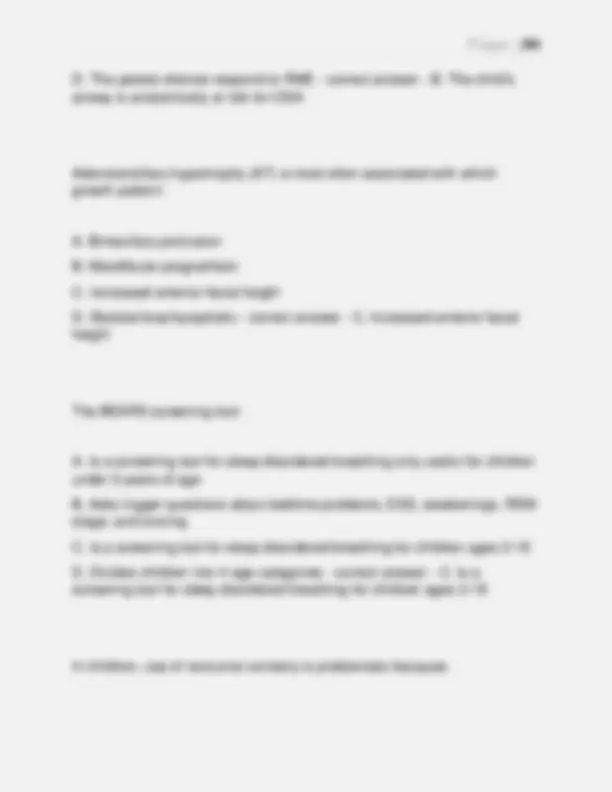
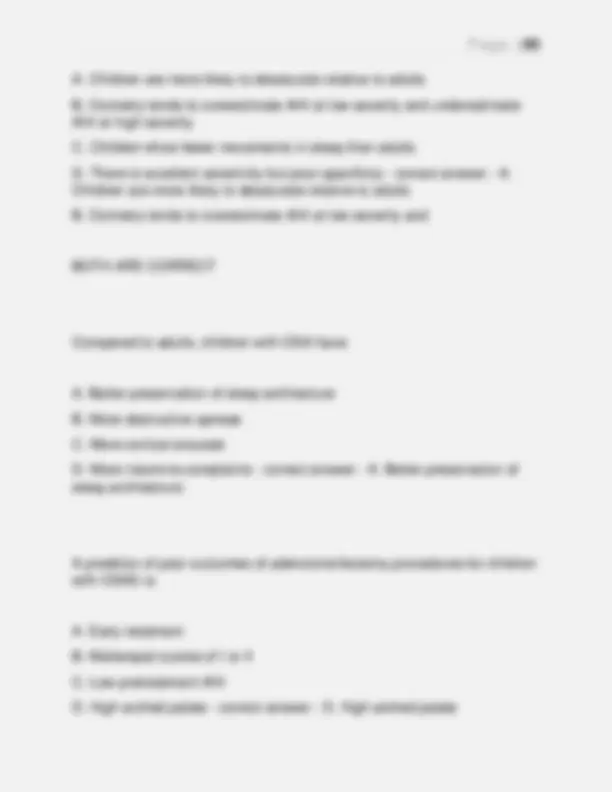
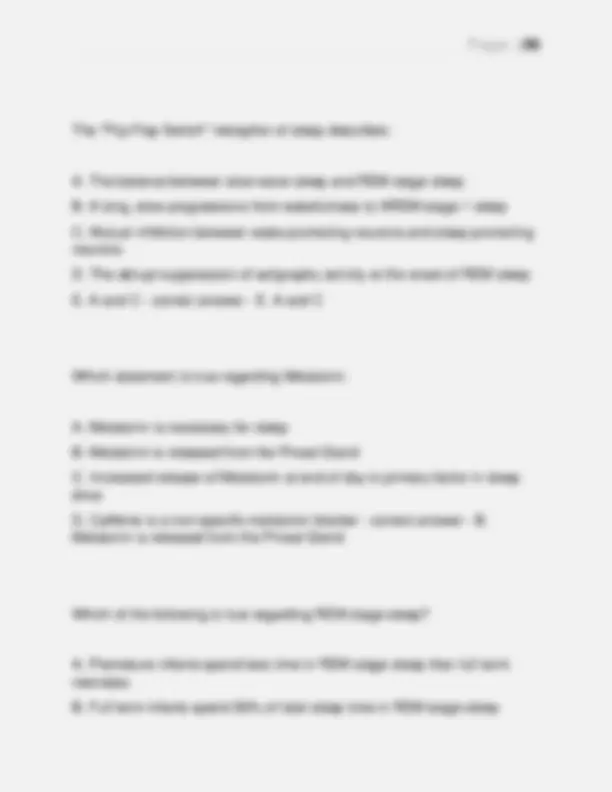
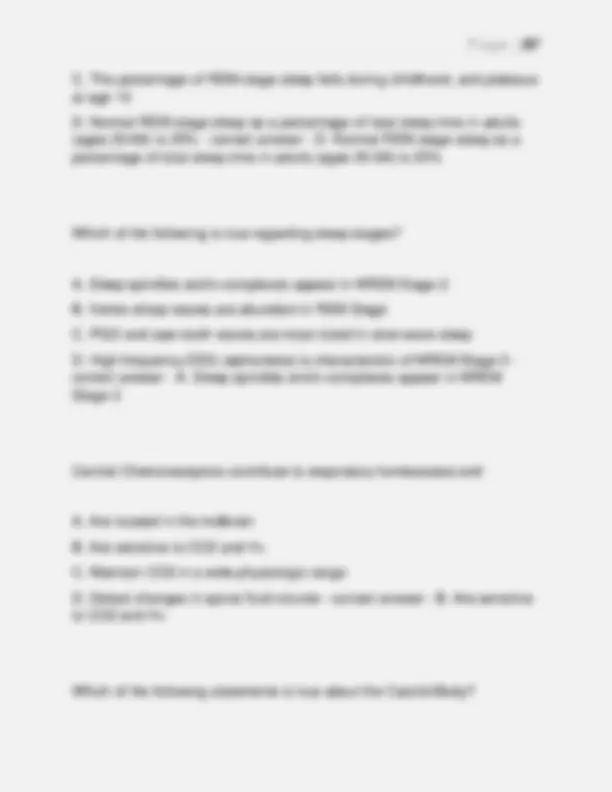
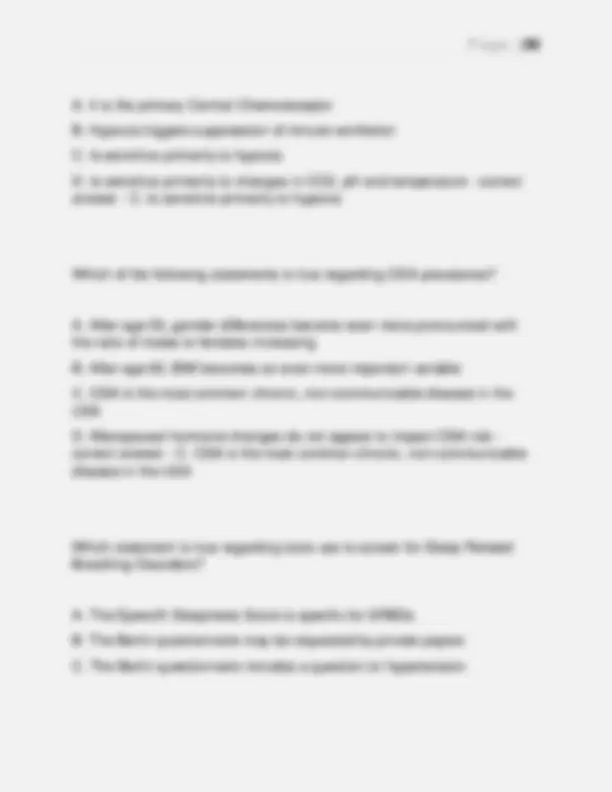
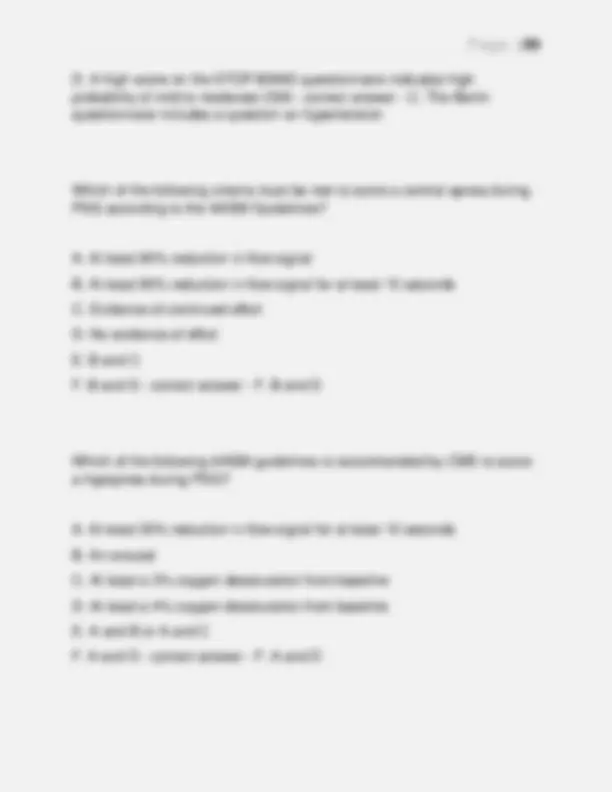
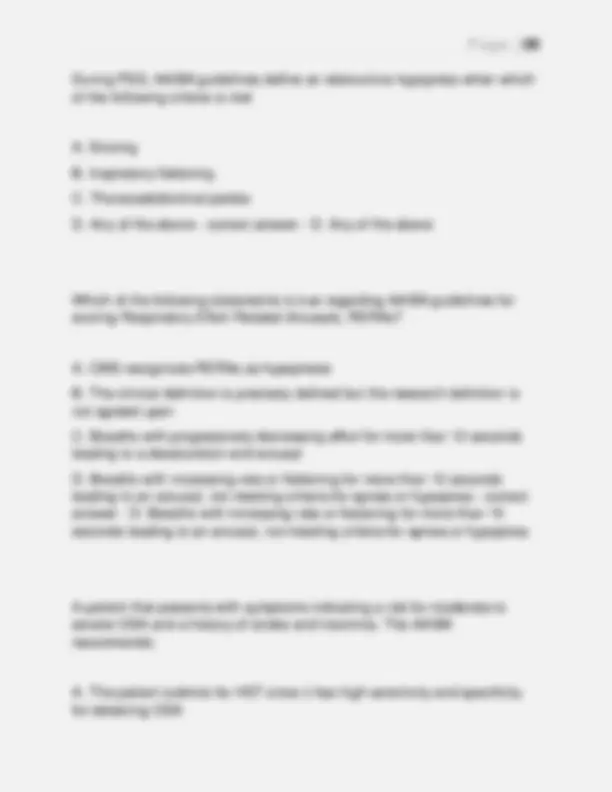
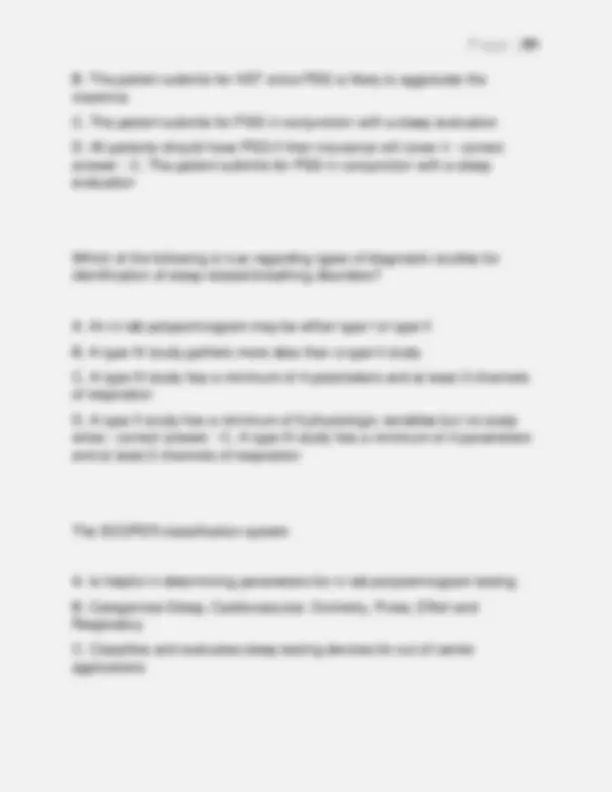
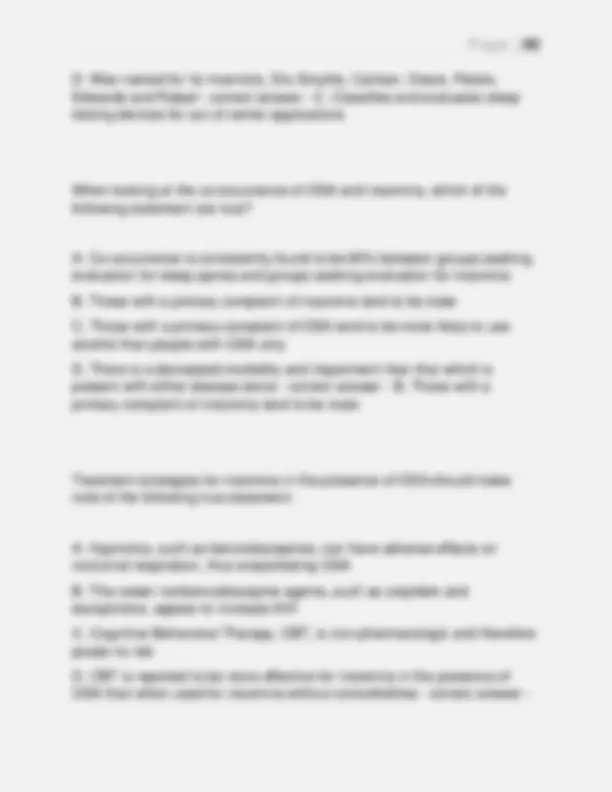
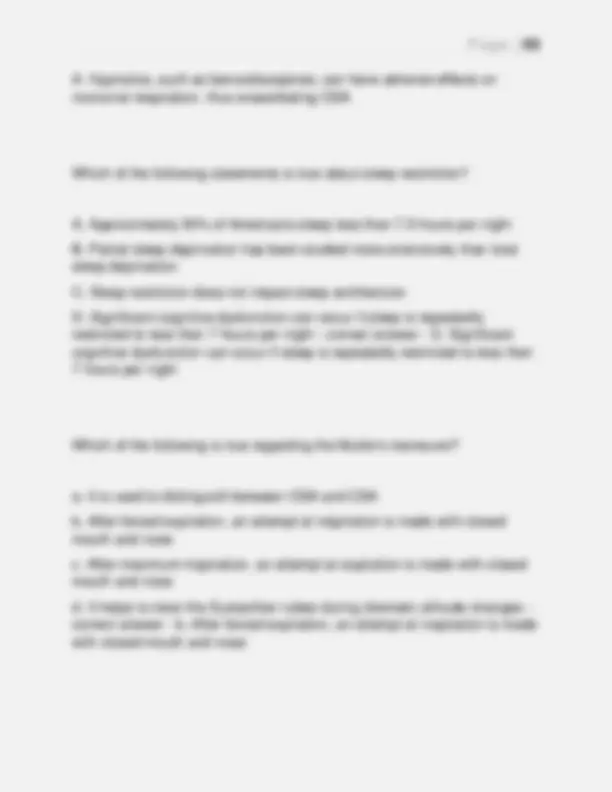
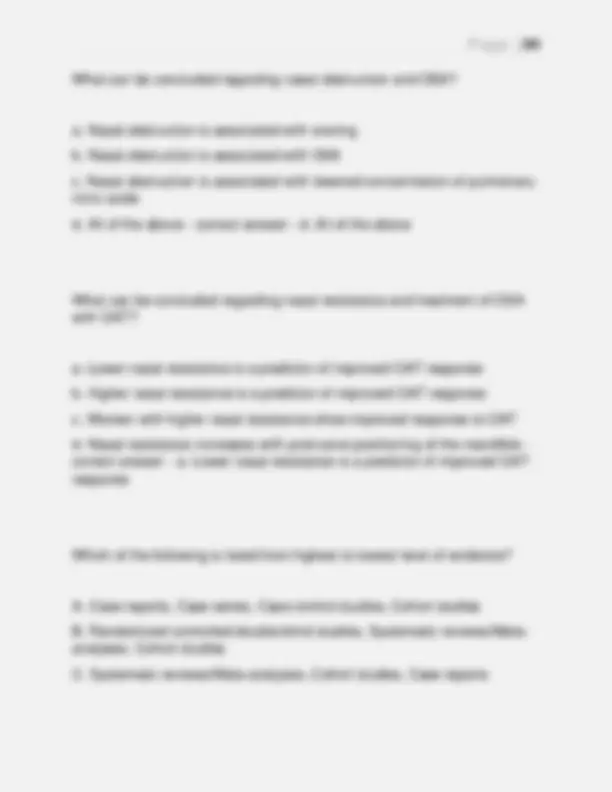
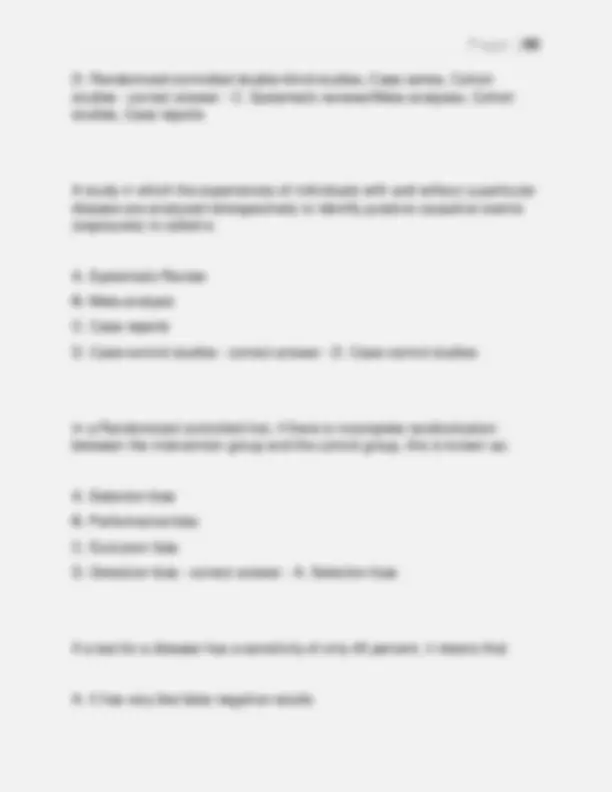
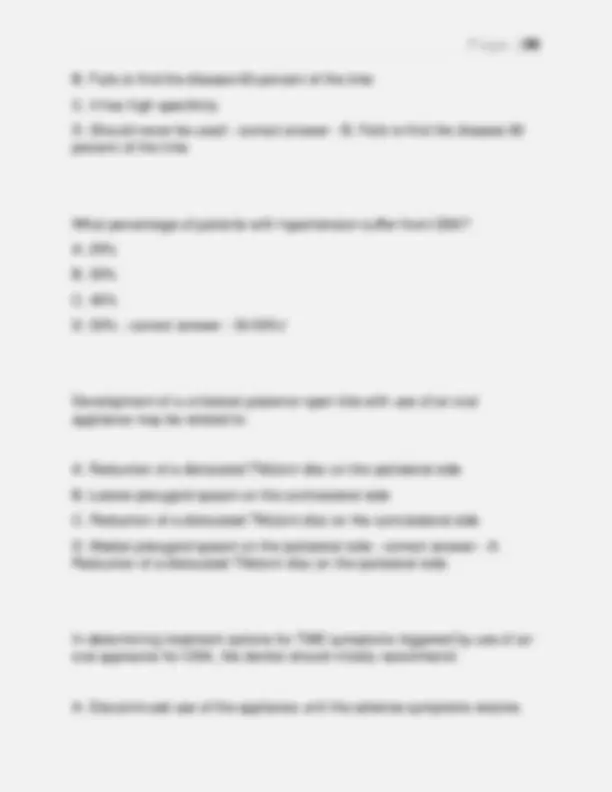
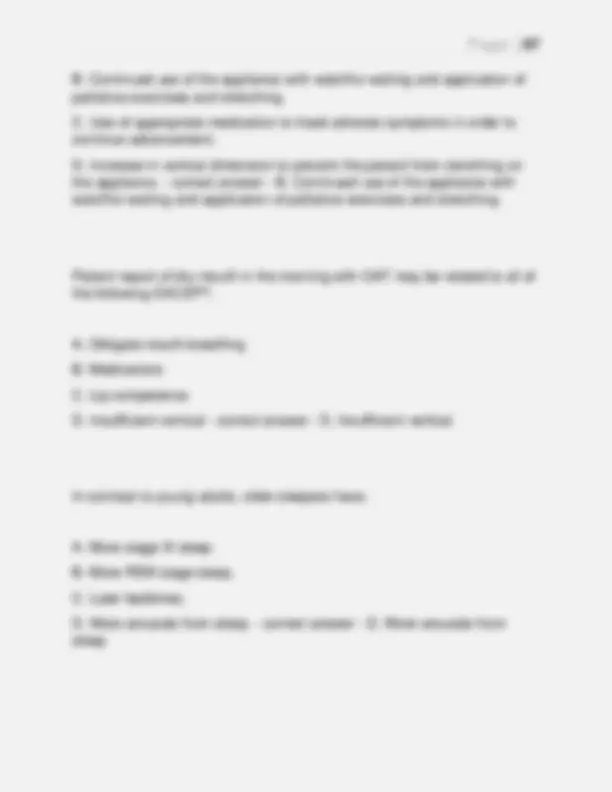
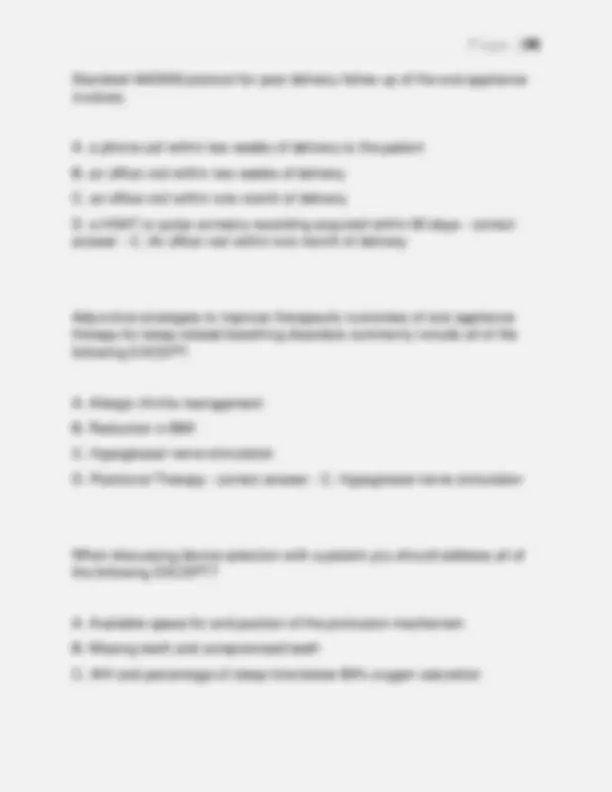
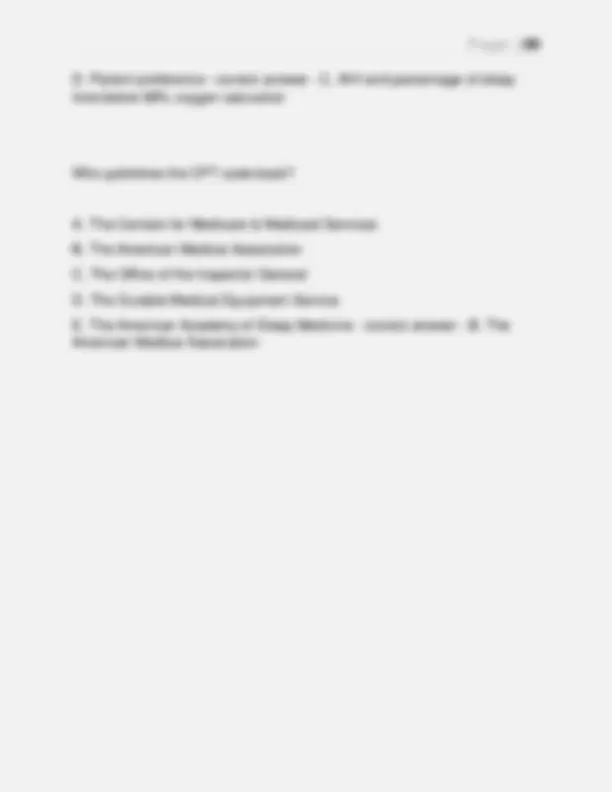


Study with the several resources on Docsity

Earn points by helping other students or get them with a premium plan


Prepare for your exams
Study with the several resources on Docsity

Earn points to download
Earn points by helping other students or get them with a premium plan
Community
Ask the community for help and clear up your study doubts
Discover the best universities in your country according to Docsity users
Free resources
Download our free guides on studying techniques, anxiety management strategies, and thesis advice from Docsity tutors
Which of the following statements is true regarding a modified mallampati classification of the oral pharynx? A. Mallampati II allows visualization of only the hard palate B. Malampati III allows visualization of only the hard palate C. Malampati classifications are taken with the patient sedated and reclined D. Mallampati classifications of IV have greater odds ratio than Mallampati classifications of I for severe OSA - correct answer - D. Mallampati classifications of IV have greater odds ratio than Mallampati classifications of I for severe OSA What 8 item questionnaire was developed to perioperatively screen for risk of OSA? A. ESS B. STOP-BANG C. MSLT D. Berlin - correct answer - B. STOP-BANG
Typology: Exams
1 / 99

This page cannot be seen from the preview
Don't miss anything!




























































































Which of the following statements is true regarding a modified mallampati classification of the oral pharynx? A. Mallampati II allows visualization of only the hard palate B. Malampati III allows visualization of only the hard palate C. Malampati classifications are taken with the patient sedated and reclined D. Mallampati classifications of IV have greater odds ratio than Mallampati classifications of I for severe OSA - correct answer - D. Mallampati classifications of IV have greater odds ratio than Mallampati classifications of I for severe OSA What 8 item questionnaire was developed to perioperatively screen for risk of OSA? A. ESS B. STOP-BANG C. MSLT D. Berlin - correct answer - B. STOP-BANG
In the pathophysiology of sleep apnea, airway patency and stability is promoted by which factor? A. Increased lung volume B. Shorter mandible C. Increased parapharyngeal fat deposition D. Negative inspiratory pressure E. Reduced pharyngeal muscle dilator activity - correct answer - A. Increased lung volume Oral appliance therapy commonly provides successful sole therapy for which of the following sleep-related breathing disorders? A. Primary central sleep apnea B. Cheyne-Stoke periodic breathing C. Obesity hypoventilation D. Overlap syndrome (OSA and COPD) E. None of the above - correct answer - E. None of the above Which of the following is true about OSA and HTN? A. Ambulatory BP is increased in OSA patients primarily due to increased salt intake associated with elevated ghrelin levels
D. Frequent bruxing - correct answer - B. Increased muscle tone on inspiration Key features of sleep apnea as recorded during an in-lab sleep study include marked reduction or absence of air flow, arousals from sleep, slowing of heart rate and: A. Choking or gasping for air B. Oxygen desaturation C. Flattening of the nasal pressure signal D. Flailing of the arms and legs E. Sawtooth waves in the EEG - correct answer - B. Oxygen Desaturation Who publishes the CPT codebook? A. The Centers for Medicare and Medicaid Services B. The American Medical Association C. The Office of the Inspector General D. The Durable Medical Equipment Service E. The American Academy of Sleep Medicine - correct answer - B. The American Medical Association A 48 year old man is treated with OAT for his moderate OSA. On repeat sleep testing, his apnea-hypopnea index (AHI) has decreased to 3 events
per hour, and he reports resolution of snoring and daytime sleepiness. What is the most reasonable dental-medical sleep medicine follow up regimen for this patient? A. As needed B. Every 6 months for the first year, then annually C. Monthly for the first 6 months, then every 6 months D. Every other year - correct answer - B. Every 6 months for the first year, then annually Which of the following would exclude oral appliance therapy as a first treatment trial for OSA? A. Xerostomia B. Edentulism C. Micrognathia D. Steep mandibular plane angle - correct answer - B. Edentulism Reviewing your patient's diagnostic polysomnogram, you note more than a 50% epoch consists of alpha waves. According to the current PSG scoring guidelines, the patient is in which stage of sleep? A. Stage I NREM B. Stage II NREM C. Stage III NREM
The 2015 Practice Guidelines created through cooperative effort of the AASM and AADSM suggest a physician should seek collaboration with a qualified dentist, described as someone who has at least: A. Board certification B. Facility accreditation C. Completion of a 1 yr residency in dental sleep medicine D. Additional training or experience in dental sleep medicine - correct answer - D. Additional training or experience in dental sleep medicine An understanding of loop gain is important to the clinical practice of dental sleep medicine because: A. It excludes the possibility of cheyne stokes breathing in patients with severe OSA B. It is the basis of the Mallampati classification system C. It defines the number of sequential obstructive apneas in an epoch D. It contributes to the multifactorial nature of sleep related breathing disorders - correct answer - D. It contributes to the multifactorial nature of sleep related breathing disorders With regards to biomechanical properties of the upper airway, which statement is true? A. Sleep apnea patients paralyzed during general anesthesia (neural drive removed) demonstrated airway compliance similar to healthy subjects
B. Sleep apnea patients had more negative closing pressures C. Sleep apnea patients demonstrate a more positive Pcrit D. There is no correlation between collapsibility when awake and collapsibility when asleep - correct answer - C. Sleep apnea patients demonstrate a more positive Pcrit Tagged MRI recently showed 3 patterns of tissue formation during mandibular advancement. Which of these was NOT observed? A. The whole tongue moved forward "en bloc" B. Only the superior posterior portion of the tongue moved forward C. The posterior tongue did not move, but the whole tongue elongated D. Only the inferior posterior portion of the tongue moved forward - correct answer - B. Only the superior posterior portion of the tongue moved forward In Van Heasendonck's 2015 systematic review of oral appliance health benefits, mean disease alleviation was calculated using the following: A. An embedded microsensor B. A highly compliant patient population C. Patient's diaries of hours of nightly device use D. Patient's attestations to hours of nightly device use - correct answer - A. An embedded microsensor
D. Blinded triple trial - correct answer - A. Randomized control trial The masseter muscle originates at: A. The temporal fossa B. The zygomatic arch C. The mylohyoid ridge D. The coronoid process - correct answer - B. The zygomatic arch In Sheats et. al., a morning occlusal guide is a common side effect management modality. Which of the following is CORRECT? A. A MOG encompasses many custom made appliances and pre- fabricated devices used in an effort to reposition the mandible into its habitual pre-treatment position B. A MOG has a very specific design as established by the AADSM consensus committee on side effects C. A morning occlusal guide was shown to stretch the lateral pterygoid muscle to full functional length with EMG studies D. Use of an MOG assures the patient that there will be no bite changes as a result of use of an oral appliance - correct answer - A. A MOG encompasses many custom made appliances and pre-fabricated devices used in an effort to reposition the mandible into its habitual pre-treatment position
All of the following exacerbate sleep disordered breathing, EXCEPT: A. Use of stimulants within 1 hr of bedtime B. Consumption of a heavy meal within 1 hr of bedtime C. Use of melatonin within 1 hr of sleep onset D. Use of alcohol, especially as a means to induce sleep - correct answer - C. Use of melatonin within 1 hr of sleep onset A patient presents to consult with you regarding oral appliance therapy for their moderate OSA. They report intermittent "jaw pain" for the past 6 weeks. You should explain that: A. It is best to postpone treatment until the pain has resolved B. An oral appliance is contraindicated for a patient that has active TMD C. A comprehensive oral-facial evaluation is necessary to ID the source of their jaw pain before considering or proceeding with oral appliance therapy D. An oral appliance will improve their jaw pain if the source of the pain is muscular, and not originating from the TMJ - correct answer - C. A comprehensive oral-facial evaluation is necessary to ID the source of their jaw pain before considering or proceeding with oral appliance therapy The most recent research points to the primary etiology of sleep bruxism as: A. Nicotine, ethanol, recreational drug or caffeine use B. Peripheral triggers such as occlusal discrepancies
In sleep, body temperature... - correct answer - Decreases, then begins to rise just before morning wakeup time Which neurons are sleep promoting? - correct answer - - Ventrolateral Preoptic System (VLPO)
What does the SCN promote? - correct answer - Wakefulness, and maintains sleep after sleep drive dissipates in the 2nd half of the jight Where is melatonin released? - correct answer - Pineal gland Regulated by SCN Is melatonin necessary for sleep? - correct answer - No, but helps synchronize circadian rhythms What causes sleep drive to buildup throughout the day? - correct answer - Buildup of adenosine Induces sleep by inhibiting wake promoting neurons What neurotransmitter does caffeine inhibit? - correct answer - Adenosine Promotes wakefulness What are some characteristics of REM? - correct answer - - Increased brain wave activity
What phase of sleep are sleep spindles present in? - correct answer - Mostly N Very small amount present in N Where do sleep spindles originate? - correct answer - Thalamus Where do sleep spindles propogate? - correct answer - Cortex What are sleep spindles associated with? - correct answer - Offline memory processes **Get increased spindle activity after learning What waves are associated with N1 sleep? - correct answer - Vertex sharp waves - alpha waves What sleep study architecture is associated with N2 sleep? - correct answer - - K complexes
When do REM stages start? - correct answer - 80 - 100 minutes after onset of sleep How long are the cycles between REM and NREM? - correct answer - 90 minutes What are the main purposes of sleep? - correct answer - - Enhance memory consolidation
What do central chemoreceptors detect? - correct answer - - CO
What is the definition of apnea? - correct answer - Cessation of airflow for 10 seconds or longer What is the definition of hypopnea? - correct answer - Decrease in airflow lasting for 10+ seconds 30% reduction of airflow AND At least a 3% oxygen desaturation OR an arousal (CMS says 4%) Shallow breathing Decreased minute ventilation Why do humans have sleep apnea and others do not? - correct answer - Longer, more collapsible airway. No overlap of epiglottis and soft palate Allows advanced speech but unprotected airway during sleep What is the measure of airway patency? - correct answer - Pcrit Determined by sum of structural and neuromuscular determinants of airway collapsibility